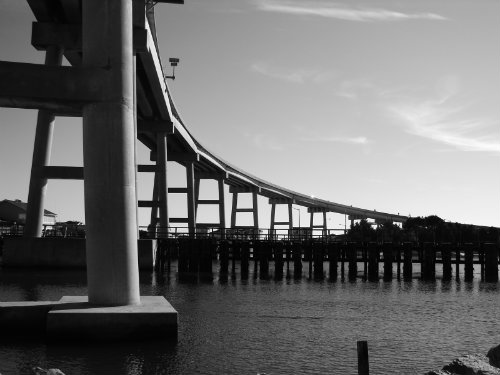Lou’s Views
News & Views / October Edition
Calendar of Events –
N.C. Oyster Festival
October 19th & 20th
Ocean Isle Beach.
..
..
The annual North Carolina Oyster Festival has been taking place since 1978. Come celebrate everything Oyster with a variety of foods, crafts, contests, children’s activities, and musical performances at Mulberry Park in Shallotte. Signature Festival events include the Oyster Shucking Contest, Oyster Eating Contest, and Oyster Stew Cook-off.
For more information » click here

N.C. Festival by the Sea
October 26th & 27th
Holden Beach
.
Hosted by the Holden Beach Merchants Association this annual two-day festival which started in the 1980’s occurs on the last full weekend in October. The festival is kicked off with a parade down the Holden Beach causeway. There is a fishing tournament, horseshoe tournament, and a sandcastle building contest. Vendors provide food, arts and crafts, amusement rides and other activities. There is live musical entertainment both days at the Holden Beach’s Pavilion.
For more information » click here
 Discover a wide range of things to do in the Brunswick Islands for an experience that goes beyond the beach.
Discover a wide range of things to do in the Brunswick Islands for an experience that goes beyond the beach.
For more information » click here.
Calendar of Events Island –

Volunteer Appreciation Luncheon
The Town of Holden Beach will hold its annual Volunteer Appreciation Luncheon on Friday, October 25th at 11:30 a.m. Town board and committee members are invited to attend and bring a guest. Please RSVP by emailing Christy at christy.ferguson@hbtownhall.com with your name and the total number in your party.
 Barktoberfest
Barktoberfest
The Town of Holden Beach will hold Barktoberfest on Friday evening, October 25th. Owners and their dogs should meet at Bridgeview Park Picnic shelter at 5:00 p.m. where we will do a trick-or-trot around the block. There will be a doggie costume contest and fall pictures. Registration is required by October 4th. Email Christy at christy.ferguson@hbtownhall.com to register.
 Monster Mash Trunk-or-Treat
Monster Mash Trunk-or-Treat
The Town of Holden Beach will hold a trunk-or-treat on October 31st from 5:30-7:00 p.m. at Bridgeview Park. Residents, property owners, and businesses may register by October 11th to decorate your trunk and pass out candy. Trunks must be ready by 5:00 p.m. No political activity may be represented at the booth displays. There will be a prize for best decorated trunk and a costume contest held at 6:30 p.m. Categories include 3 and under, 4-7, 8-11, 12-15 and adult. Register by emailing Christy at christy.ferguson@hbtownhall.com. Those planning to attend the event may also email so that there is a headcount for candy purposes. In the email, please indicate whether you will be setting up a truck or trick-or-treating.

 Veterans Appreciation Luncheon
Veterans Appreciation Luncheon
The Town will hold its Veterans Appreciation Luncheon on Monday, November 8th. The event will be held at 11:30 a.m. at the picnic shelter at Bridgeview Park. If the weather is not conducive to an outside event, we will move the event indoors at Town Hall. Please RSVP by calling 910.842.6488 prior to Wednesday, November 2nd with your name and the name of your guest.
 Turkey Trot
Turkey Trot
The Town of Holden Beach will hold its annual Turkey Trot on Thanksgiving morning, November 28th at 8:00 a.m. All individuals interested in participating should call 910.842.6488 to register. Please bring a canned food item to donate to the local food pantry.
Dates to be determined for the following events:
 Contractors Information Seminar
Contractors Information Seminar
The Planning & Inspections Department, supported by the town staff, will be hosting the thirteenth annual Contractors Information Seminar on Thursday, November 9th. Contractors and electricians will earn two hours of continuing education credits.
 Tree Lighting
Tree Lighting
The Town of Holden Beach will hold its annual tree lighting ceremony on Thursday, November 30th at 6 p.m.
Parks & Recreation / Programs & Events
For more information » click here
Reminders –
 News from Town of Holden Beach
News from Town of Holden Beach
The town sends out emails of events, news, agendas, notifications, and emergency information. If you would like to be added to their mailing list, please go to their web site to complete your subscription to the Holden Beach E-Newsletter.
For more information » click here

Paid Parking
Paid parking will be enforced in all Holden Beach designated parking areas. It will be enforced from 9:00 a.m. – 5:00 p.m. daily, with free parking before and after that time. All parking will use license plates for verification.
Visit https://hbtownhall.com/paid-parking for more information and to view a table with authorized parking areas.
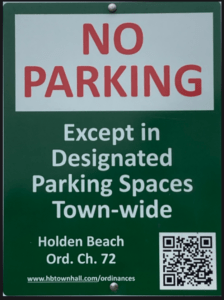

Pets on the Beach Strand
Pets – Chapter 90 / Animals / 90.20
Effective September 10th
- Pets allowed back on the beach strand during the hours of 9:00am through 5:00pm
- Dog’s need to be on a leash
- Owner’s need to clean up after their animals

Solid Waste Pick-Up Schedule
GFL Environmental change in service, October through May trash pickup will be once a week. This year September 28th will be the the last Saturday trash pick-up until June. Trash collection will go back to Tuesdays only.
Please note:
. • Trash carts must be at the street by 6:00 a.m. on the pickup day
. • BAG the trash before putting it in the cart
. • Carts will be rolled back to the front of the house
GFL Refuse Collection Policy
GFL has recently notified all Brunswick County residents that they will no longer accept extra bags of refuse outside of the collection cart. This is not a new policy but is stricter enforcement of an existing policy. While in the past GFL drivers would at times make exceptions and take additional bags of refuse, the tremendous growth in housing within Brunswick County makes this practice cost prohibitive and causes drivers to fall behind schedule.
Solid Waste Pick-up Schedule –
starting October once a week
Recycling –
starting October every other week pick-up
 Yard Waste Service
Yard Waste Service
Yard debris is collected on the second (2nd) and fourth (4th) Fridays during the months of October, November, and December. Yard debris needs to be secured in a biodegradable bag (not plastic) or bundled in a maximum length not to exceed five (5) feet and fifty (50) pounds in weight. Each residence is allowed a total of ten (10) items, which can include a combination of bundles of brush and limbs meeting the required length and weight and/ or biodegradable bags. Picks-ups are not provided for vacant lots or construction sites.
Curbside Recycling – 2024
GFL Environmental is now offering curbside recycling for Town properties that desire to participate in the service. The service cost per cart is $106.88 annually paid in advance to the Town of Holden Beach. The service consists of a ninety-six (96) gallon cart that is emptied every other week during the months of October – May and weekly during the months of June – September.
Curbside Recycling Application » click here
Curbside Recycling Calendar » click here

Trash Can Requirements – Rental Properties
GFL Environmental – trash can requirements
Ordinance 07-13, Section 50.08
Rental properties have specific number of trash cans based on number of bedrooms.
* One extra trash can per every 2 bedrooms
..
§ 50.08 RENTAL HOMES.
(A) Rental homes, as defined in Chapter 157, that are rented as part of the summer rental season, are subject to high numbers of guests, resulting in abnormally large volumes of trash. This type of occupancy use presents a significantly higher impact than homes not used for summer rentals. In interest of public health and sanitation and environmental concerns, all rental home shall have a minimum of one trash can per two bedrooms. Homes with an odd number of bedrooms shall round up (for examples one to two bedrooms – one trash can; three to four bedrooms – two trash cans; five – six bedrooms – three trash cans, and the like).
Building Numbers
Ocean front homes are required to have house numbers visible from the beach strand.
Please call Planning and Inspections Department at 910.842.6080 with any questions.
§157.087 BUILDING NUMBERS.
(A) The correct street number shall be clearly visible from the street on all buildings. Numbers shall be block letters, not script, and of a color clearly in contrast with that of the building and shall be a minimum of six inches in height.
(B) Beach front buildings will also have clearly visible house numbers from the strand side meeting the above criteria on size, contrast, etc. Placement shall be on vertical column supporting deck(s) or deck roof on the primary structure. For buildings with a setback of over 300 feet from the first dune line, a vertical post shall be erected aside the walkway with house numbers affixed. In all cases the numbers must be clearly visible from the strand. Other placements may be acceptable with approval of the Building Inspector.
Storm Events –

Hurricane Vehicle Decals
Property owners will be provided with four (4) decals which were included in their April water bills. It is important that you place your decals in your vehicle or in a safe place. A $10 fee will be assessed to anyone who needs to obtain either additional or replacement decals. Decals will not be issued in the 24-hour period before an anticipated order of evacuation.
The decals are your passes to get back onto the island to check your property in the event that an emergency would necessitate restricting access to the island. Decals must be displayed in the driver side lower left-hand corner of the windshield, where they are not obstructed by any other items. Officials must be able to clearly read the decal from outside the vehicle.
Property owners without a valid decal will not be allowed on the island during restricted access. No other method of identification is accepted in an emergency situation. Click here to visit the Town website to find out more information regarding decals and emergency situations.
EVACUATION, CURFEW & DECALS
What is a State of Emergency?
A proclamation by the Town which enacts special ordinances and/or prohibitions during emergency situations to protect the public, public health and property. These prohibitions can include limitations on movement, curfews, directing of evacuations, controlling ingress and egress to the emergency area, alcoholic beverages, and more. State of Emergencies are issued in accordance with N.C.G.S. 166A-19.22.
What is a curfew?
A curfew is an order, typically during a State of Emergency, which requires all persons in the affected areas to remain on their own property. During a curfew, you are not free to move about public domain areas or on others’ property. Violations of a curfew could lead to arrest in certain situations.
What is a voluntary evacuation?
A voluntary evacuation creates a recommendation for all parties in the affected area to get their affairs in order hastily and evacuated.
What is a mandatory evacuation?
A mandatory evacuation means you must leave the area in which an order has been issued. With recent changes to the laws in North Carolina, you no longer have the option of staying in an area under an order of mandatory evacuation.
Why is the sewer system turned off during a storm/event?
Often the sewer system is turned off during storms which have the potential to create significant flooding on the island. The system is turned off to protect its integrity. If it were left on, it could pose a significant threat to the public health. When the system is manually shut down, it also greatly reduces the time needed to bring it back up after an event which equates to getting residents and guests back on the Island much faster.
Why is there a delay for decal holders to get back on the island once a storm ends?
After a storm, many things must occur before even limited access can be allowed. Some of those things include making sure the streets are passable; the sewer system must be restarted to comply with State laws; the utilities (water, sewer, electricity, propane supplies) must be checked to ensure no safety risk are present; and the post-storm damage assessment team needs to perform an initial assessment.
Where can I get up-to-date information during and after a storm or State of Emergency?
You can sign up for the Town email service by clicking here. The newsletter, along with the Town’s website will be the main sources of information during an emergency situation. Links to the Town’s official Facebook and Twitter pages can be found on the website. You can also download our app for Apple and Android phones by accessing the app store on your smart phone and searching Holden Beach.
Please refrain from calling Town Hall and Police Department phone lines with general information questions. These lines need to remain open for emergencies, storm management and post-storm mitigation. All updates concerning re-entry, general access, etc. may be found on the Town’s website and other media outlets.
Why do I see others moving about the island during a curfew?
If a curfew order is in place, you must stay on your own property. You may see many other vehicles moving about the Island. We often receive assistance from other local, state, federal and contract personnel during events. It is likely these are the personnel you are seeing, and they are involved in the mitigation process for the event. Please do not assume that a curfew order has been lifted and/or you are free to move about the island.
Can I check my friends’ property for them?
If a curfew order is in place, you may ONLY travel to your personally owned property. Traveling about the Island to check on others’ property is not allowed. is in place, you may ONLY travel to your personally owned property. Traveling about
Who can obtain decals?
Only property owners and businesses who service the island can obtain a decal.
How do I get decals for my vehicle…?
If I am an owner?
Decals will be mailed out in water bills to property owners before the season starts. Those owners who need additional decals can contact Town Hall. A fee may apply, please check the current fee schedule.
If I am a renter?
You must contact the owner of the property to obtain a decal.
If I am a business owner on the Island?
You must contact Town Hall to obtain a decal.
If I am a business owner off the Island that provides services on the Island?
You must contact Town Hall for eligibility and to obtain a decal.
When does my decal expire?
All decals expire on the last day of the calendar year as indicated on the decal.
Where do I put my decal on my car?
Decals must be displayed in the lower left-hand corner of the windshield, where they are not obstructed by any other items to include window tinting, other decals, etc. Officials must be able to clearly read the decal from outside the vehicle. Please note that re-entry will not be allowed if a current, intact decal is not affixed to the windshield as designated.
How do I replace a decal if I get a new vehicle?
If you trade a vehicle or otherwise need a replacement decal, you may obtain them from Town Hall during normal business hours. A fee may apply, check the current fee schedule.
Can I obtain a decal right before an emergency occurs?
While most of the storms we deal with are tropical in nature with some type of advanced warning, we do experience many other types of events that could create a State of Emergency without warning. All eligible parties should obtain decals as early as possible each year to avoid being denied access to the Island. Decals shall not be issued during the 24-hour period prior to an anticipated order of evacuation so staff can concentrate on properly preparing the Town for the storm/event.
Can I use a tax bill or another document for re-entry?
No. You MUST have a decal to re-enter the Island until it is open to the general public.
How does re-entry after a storm during a State of Emergency work?
The bridge is closed to all vehicle access, except for official vehicles. Once those with proper decals are allowed access, they must conform with the current rules in place by the specific State of Emergency Order. After all hazards have been rendered safe, the bridge will be opened to the general public. A curfew could remain in effect however, to ensure the safety and security of the Island and its residents and guests. Please understand this process typically takes days to evolve and could be significantly longer, depending on the amount of damage sustained. Please refrain from calling for times for re-entry, as those are often not set on schedule. Instead, stay tunes to local media outlets and official social media accounts for accurate updates.
How can I check on my property if access is limited to the Island?
Once it is safe, property owners with valid decals will be allowed back on the Island after a storm/event. At this point, you can travel to your property, in accordance with the rules of the specific State of Emergency Order currently in place.
If you live out of the area, please do not travel to the Island until you are certain you will be allowed access. Stay tuned to those media outlets and email services that are of official nature for this information. Also, be certain you have your current, valid decal properly affixed to your vehicle.
It is a good idea to be sure your contact information is current with the Town tax office as this is the location Town officials will use in the event you need to be contacted.
For more information » click here
NC General Statute 166A-19.22
Power of municipalities and counties to enact ordinances to deal with states of emergency.
Synopsis – The governing body may impose by declaration or enacted ordinance, prohibitions, and restrictions during a state of emergency. This includes the prohibition and restriction of movements of people in public places, including imposing a curfew; directing or compelling the voluntary or mandatory evacuation of all or part of the population, controlling ingress and egress of an emergency area, and providing for the closure of streets, roads, highways, bridges, public vehicular areas. All prohibitions and restrictions imposed by declaration or ordinance shall take effect immediately upon publication of the declaration unless the declaration sets a later time. The prohibitions and restrictions shall expire when they are terminated by the official or entity that imposed them, or when the state of emergency terminates.
Violation – Any person who violates any provisions of an ordinance or a declaration enacted or declared pursuant to this section shall be guilty of a Class 2 misdemeanor.
Upon Further Review –
 ReadyBrunswick Emergency Notifications Alerts
ReadyBrunswick Emergency Notifications Alerts
Brunswick County uses ReadyBrunswick as part of the County’s effort to continuously improve communications during emergency situations within our area. Powered by Everbridge, the ReadyBrunswick notification system sends emergency notifications in a variety of communication methods such as:
- Landline (Voice)
- VoIP (Voice over Internet Protocol)
- Mobile (Voice)
- Mobile SMS (Text Messaging)
In the case of an emergency, you may choose to receive notifications via one or all of these communication methods. It’s recommended that you register several media options to receive messages in the event a particular communication device is unavailable.
For more information » click here
Covid –

New Covid Vaccines Are Coming. Here’s What to Know.
We asked experts about the right time to get a shot, and how long protection will last.
The Food and Drug Administration approved updated Covid-19 vaccines on Thursday, paving the way for the shots to soon land in pharmacies, doctors’ offices and health centers. The Centers for Disease Control and Prevention has said it will recommend that adults and children six months and older get updated vaccines. Here’s what to know.
How are the new shots different?
The F.D.A. approved one vaccine from Pfizer and one from Moderna. Representatives from the drug companies said that their shots were ready to ship immediately after approval. Both vaccines target KP.2, a strain of the coronavirus that started to spread widely this spring. The variants that are most prevalent in the United States right now are very similar to KP.2, and so the vaccines should protect against them. “When the match is very good, as we anticipate it would be with the current circulating strains, you get actual protection from infection for several months,” said Dr. Paul Sax, the clinical director of the division of infectious diseases at Brigham and Women’s Hospital in Boston. The vaccine that rolled out last fall, by contrast, was geared at an older variant that has since petered out. The biotechnology company Novavax is waiting for the F.D.A. to authorize its retooled vaccine, which will target JN.1, a variant that is also close to the strains circulating widely now.
What if I just got a vaccine?
If you received a dose of the older vaccine this summer, you may not be able to get an updated vaccine immediately — the shots need to be spread out. People who are at high risk of developing severe disease should talk with a health care provider about the ideal interval between vaccines, said Fikadu Tafesse, a virologist at Oregon Health & Science University.
What if I just had Covid?
If you’re one of the many Americans who was infected during the summer, you may want to wait a few months to get a new shot. Rushing out to get one right after you were ill won’t give you much of an added benefit, because you already have strong protection,” said Aubree Gordon, an infectious disease epidemiologist at the University of Michigan. The C.D.C. has previously said that people can wait three months after a Covid infection to get a vaccine.
How fast does protection kick in?
It takes around a week or two after getting vaccinated for antibodies to rev up and defend against the virus. Antibodies peak about a month after vaccination, Dr. Gordon said. Once you are vaccinated, you have a lower risk of infection for at least several weeks, said Dr. Peter Chin-Hong, an infectious disease specialist at the University of California, San Francisco. “It might even be longer than that,” he said, because the vaccines are so closely matched to the dominant variants that are currently circulating. And the vaccines will provide protection against the worst outcomes from Covid — developing severe disease, getting hospitalized and dying — for months.
When should I get vaccinated?
People who are at highest risk for severe disease, including those who are 65 and older, people who are immunocompromised and those with underlying medical conditions, should get the updated vaccines as soon as they are available, Dr. Sax said. “There’s a lot circulating in the community now — that would help protect them,” he said. People who are not at high risk may want to wait until October, Dr. Chin-Hong said, both to gain protection heading into the winter and holiday gatherings, and so that they can get flu shots at the same time. “Convenience trumps everything,” he said.
Can I get it for free?
Many private insurance plans, along with Medicare and Medicaid, cover the cost of Covid shots. And children can receive free vaccines through a federal program. The C.D.C.’s Bridge Access Program, which has provided about 1.5 million free Covid shots to uninsured and underinsured people, will not be renewed for this year. But Dr. Demetre Daskalakis, director of the C.D.C.’s National Center for Immunization and Respiratory Diseases, said that the agency had found $62 million in unused vaccine contract funding that would be sent to state and local immunization programs to help cover the cost of shots.
Read more » click here
Corrections & Amplifications –
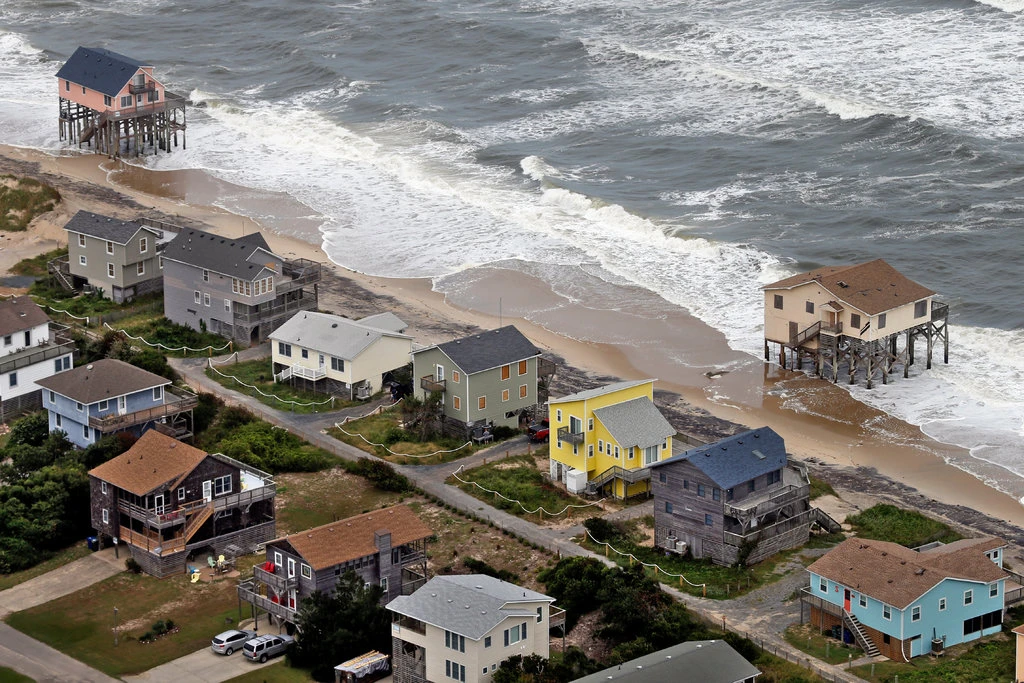
Zillow will now show climate risk data on home listings
The information is meant to help home buyers assess potential damage from extreme weather.
Potential home buyers are increasingly weighing the environmental threats their homes could face as the effects of climate change intensify across the United States. Eighty percent of buyers now consider climate risks when shopping for a home, according to a 2023 Zillow survey. To help homeowners navigate that uncertainty, Zillow is adding a climate risk threat score to every for-sale listing on its platform. Data from First Street Foundation, a nonprofit that assesses climate risk, will provide home buyers with scores that measure each property’s susceptibility to flood, wildfire, wind, heat and air quality risks. This information will be available on the Zillow app for iOS and website by the end of this year, while Android users will be able to access the data in early 2025, the company said in a release last month. Home buyers will be able to view this data on Zillow in two ways, either by looking at information within individual listings or by checking an interactive, color-coded map. The scores will display each home’s current climate risk, as well as the risk estimates for 15 and 30 years in the future — the most common terms for fixed-rate mortgages. Zillow also plans to offer tailored insurance recommendations to users alongside the risk information. First Street’s climate risk scores are established through models that measure the likelihood of a climate disaster in a given area and then the potential severity of the event, according to Matthew Eby, the company’s founder and chief executive. The company updates its models each year based on the natural disasters that have unfolded, Eby said. “This level of transparency is allowing people to choose the level of risk that they find comforting and then make an informed decision,” Eby said. “Will this change the buying experience? Absolutely.” The Zillow upgrade comes at an uncertain time for home buyers as climate change becomes more extreme. Some of the largest U.S. insurance companies have ended certain disaster protection coverage and raised premiums in response to climate risks, The Washington Post has reported. And more home listings today are affected by major climate risks compared to just five years ago, according to a report from Zillow published last month. Across all new home listings in August 2024, nearly 17 percent were at major risk of wildfire, while nearly 13 percent came with a major risk of flooding, the company said. This information could be especially valuable given that many states don’t require home sellers to disclose past flood or fire damage to potential buyers, even though more than 300,000 Americans moved to disaster-prone counties last year, The Post previously reported. A 2022 Post analysis of extreme flooding events across the country found that the Federal Emergency Management Agency’s flood maps fail to fully inform Americans of their flood risks. In a 2022 study published by real estate company Redfin, home buyers who had access to property listings that included flood risk information were less likely to view or bid on high-risk homes. That finding indicated a massive information gap for buyers regarding a home’s climate risk, according to some experts. “The information it provides is beneficial because otherwise, there’s just nothing out there for a home buyer or a renter to learn about the risk that they’re facing,” said Joel Scata, a senior environmental health attorney with the Natural Resources Defense Council. “Even if there’s debate over the methods used or the processes used, it’s better than nothing.” It’s difficult to determine the reliability of many climate risk models because the vast majority are not publicly accessible, said Benjamin Keys, a professor of real estate and finance at the University of Pennsylvania’s Wharton School who has studied the effects of climate-change-fueled disasters on insurance markets. But since the amount of climate-threat information buyers typically have has been “astonishingly low” for years, any improvement would aid transparency in the industry, he added. Climate risk modeling experts are still developing the best possible way to measure the probability of flooding, fires and other natural disasters in any given area, notes Jesse Keenan, a professor of sustainable real estate and urban planning at Tulane University. The data provided from consumer-facing models can be “uneven” depending on where a person is house-hunting, because some risks have been studied more extensively in certain regions than others, he said. “They’re not great,” Keenan said. “Some places they work well, and there’s a lot of places where the uncertainty is greater than the value.” Still, most prospective home buyers will weigh climate risks early in the hunt, and data on these risks can help flag issues they should investigate further, Keenan emphasized. For example, if a score indicates that a house is at a high risk of flooding, home buyers should talk to neighbors about their experiences or show up to the property on a rainy day. The tool should signal the start of the information-gathering process about a home’s climate risk, rather than the end, Keys added.
Read more » click here
Flood history questions added to real estate disclosure form
Sometimes it’s a puzzle why people don’t ask more questions, such as, “Has the river that’s down your road ever flooded your house, the house I’m thinking of buying?” The maxim “buyer beware” is wise advice no matter where a house is situated, but it’s good to have rules in place to cover homebuyers’ backs for the things they overlook or wrongly assume. As of July 1, prospective real estate buyers in North Carolina must now be provided the required North Carolina Real Estate Commission residential disclosure form by the seller that for the first time includes questions related to a property’s flood risk. The change in the form was requested in a petition for rulemaking filed by the Southern Environmental Law Center in December 2022 on behalf of the Natural Resources Defense Council, or NRDC, the North Carolina Justice Center, MDC Inc., the North Carolina Disaster Recovery and Resiliency School, Robeson County Church and Community Center, and NC Field. “Most of those are small, local nonprofits that respond to disasters,” Brooks Rainey Pearson, senior attorney with the law center, told Coastal Review in an interview, referring to petitioners. “So, we really wanted to give a voice to the people on the ground who deal with the fallout from flooding.” Pearson said that the Real Estate Commission had quickly granted the petition at the time and agreed to add the questions proposed by petitioners. It was then delayed by mutual agreement, she said, to adjust the law to allow the commission to merely make changes in the form. That would avoid having to go through a lengthy rulemaking process. “It was a longer journey than it should have been, but not because of any pushback,” she said. “I think everyone understands that homebuyers deserve to know if the property has flooded before.” Questions about flooding that have been added to the disclosure statement include the following: Is the property located in a federal or other designated flood hazard zone? Has the property experienced damage due to flooding, water seepage or pooled water attributable to a natural event such as heavy rainfall, coastal storm surge, tidal inundation, or river overflow? Is there a current flood insurance policy covering the property? Is there a flood or Federal Emergency Management Agency elevation certificate for the property? Has (the property owner) ever filed a claim for flood damage to the property with any insurance provider, including the National Flood Insurance Program? The form also notes that the requirement to obtain flood insurance passes down to all future owners for those properties that have received disaster assistance. Joel Scata, senior attorney with the NRDC, a national environmental nonprofit organization that is one of the petitioners, said that in the past, the only flood information that had to be disclosed to homebuyers in North Carolina was whether the property was in a floodplain. “Now with the changes, a buyer is going to have access to much more detailed information,” he told Coastal Review. According to state law, residential property owners are required to complete the disclosure statement and provide it to a buyer before an offer is made to purchase the property. New construction or never-occupied properties are exempted. Every question must be answered with “Y,” “N,” “NR” or “NA” for “Yes,” “No,” “No Representation,” and “Not Applicable,” respectively. Despite stern language in the form about requirements, there is enough gray area to give pause to anyone with insight into human failings. “An owner is not required to disclose any of the material facts that have a NR option, even if they have knowledge of them,” the statement says. Also: “If an owner selects NR, it could mean that the owner (1) has knowledge of an issue and chooses not to disclose it; or (2) simply does not know.” The form does warn that failure to disclose hidden defects “may” result in civil liability. It also assures that if an owner selects “No,” it means that the owner is not aware of any problem. But if “the owner knows there is a problem or that the owner’s answer is not correct, the owner may be liable for making an intentional misstatement.” If an owner selects NA, it means the property does not contain that particular item or feature. Scata said that he believes that whatever remedies are available for enforcement are strictly civil, and do not include criminal charges in the case of fraud or misrepresentation. “A buyer could file a civil suit, claim that the seller intentionally misled the buyer, make a fraud claim,” he said. But damages and other penalties would depend on the impact of what wasn’t disclosed, he added. A buyer should take any “NR” answer as a cue to ask the owner about what they don’t want to disclose, Scata said, adding “it’s a good indication that something is wrong with the property.” That choice could not be removed from the form unless it was done through a change in the legislation, he said. “The buyer always has the right to go back and explicitly ask the seller the question,” he said. And don’t just push the question with the buyer, he said, but also go talk to neighbors about the situation with flooding episodes in the neighborhood. Also, real estate brokers by law have a duty to disclose what they know, or reasonably should know, regardless of the seller’s response. “So, if a seller says something like ‘No, there’s never been (flooding) on the property,’” Scata said, “but the Realtor knows that’s not true, there’s a duty on them to disclose. And they can be liable if they are complicit in that fraud.” In that instance of potential fraud by a broker, the buyer can file a complaint with the Real Estate Commission. According to an NRDC press release, homes in North Carolina with prior flood losses would be expected to average an annual loss of $1,211, compared to $61 for the average home. In 2021, there were 13,237 homes purchased that were estimated to have been previously flooded. The expected annual flood damage totals for those homes were estimated at about $16 million. With climate change causing more intense rain and stronger storms, flooding is only going to become more of an issue, Pearson said. “Before when you only had to disclose if the house was in a floodplain, well, that’s no longer a good indicator of whether your house might flood,” she said. “The best indicator of whether your house might flood is whether it’s flooded before. And so, we think, just for the sake of transparency, people deserve to know that. But they also deserve to know that because — I believe it’s called behavioral economics — when people have more information, they’ll make different and better decisions.”
Read more » click here
Odds & Ends –
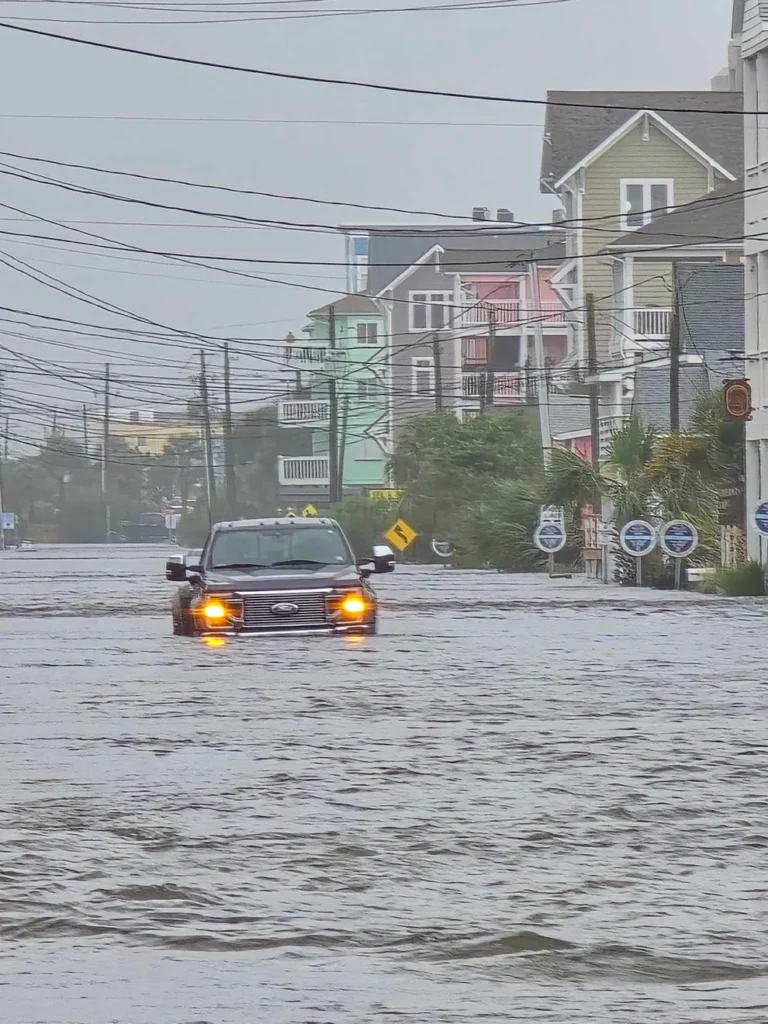
Storm Lashes the Carolinas With Historic Amounts of Rain
More than a foot of rain fell on parts of North Carolina for over 12 hours, catching residents, officials, and forecasters by surprise.
A powerful storm system that was not quite a tropical storm dropped historic amounts of rainfall in southeastern North Carolina on Monday, forecasters said, leading to flooded businesses and collapsed roads in a region hit by Tropical Storm Debby just last month. Despite having tropical storm force winds above 39 miles per hour, the storm fell technically short of becoming what would have been the eighth named storm of this year’s Atlantic hurricane season, Helene. But even without the name, the hazards were the same. The storm unleashed flash flooding and wind gusts stronger than 60 m.p.h. along the North Carolina coast, forecasters with the National Hurricane Center said on Monday afternoon. Debby brought more than a foot of rain across some parts of the Carolinas in August, and forecasters did not initially expect that much rain to fall on Monday. But by early afternoon, some locations in North Carolina had already seen nearly 15 inches of rain, catching residents, officials, and forecasters by surprise. More than 18 inches of rain fell in Carolina Beach between midnight Sunday and Monday afternoon. Forecasters in Wilmington called the likelihood of that amount of rain occurring in only 12 hours a one-in-a-thousand-year event. The National Weather Services pushed flash flood warnings for parts of Raleigh, N.C., Fayetteville, N.C., and surrounding areas issued on Monday night into Tuesday. Northern Cumberland County got about four to five inches of rain by late Monday. Larry Ashley, a retiree in Southport, N.C. where some of the flooding and road damage took place on Monday, said the rain was unlike anything he’s seen before. “It was like having a bucket of water dumped on you constantly,” he said. Mayor Lynn Barbee of Carolina Beach, a town just south of Wilmington, said that many parts of his town were two to three feet underwater on Monday. Emergency teams made dozens of rescues in the area on Monday and most businesses downtown were impacted by floodwaters, the mayor said. He added that Monday was the third major flooding event in Carolina Beach in the past few months that the town did not anticipate. He said he knew the storm would be an issue when the wind began to pick up and it sounded like a hurricane. “We sort of feel like we’re in rainstorm alley,” Mr. Barbee said. The fire department in Wilmington made multiple water rescues in Carolina Beach and Kure Beach, where the water was waist-deep, according to a post on its Facebook page. New Hanover County Fire Rescue said in a social media post that it saved two people trapped in a car. Schools in New Hanover County dismissed all students early on Monday and said classes on Tuesday would be conducted remotely. Some students at Carolina Beach Elementary were taken home early on Monday by emergency vehicles when flooding began and parents were unable to reach their children, Mr. Barbee said. Tuesday classes were canceled for schools in neighboring Brunswick County, which closed government offices on Monday because of a declared state of emergency. WECT, a television station in Wilmington, showed footage of cars and cargo vans stuck in floodwaters, as well as road closures in the area. Several roads in Brunswick County collapsed or partially collapsed on Monday, according to posts made on Facebook by the Brunswick County Sheriff’s Office. Officials in Southport, about 30 miles south of Wilmington, closed the roads to all incoming traffic on Monday and told residents to shelter in place at their homes or places of work, according to the city’s Facebook posts. Chris Adams, a supervisor for Omni Electric in Wilmington, said on Monday evening that two of his works crews had been stuck moving through flooded stretches of Highway 17 in Brunswick County since 10:30 a.m. and were still unable to make it home. He said parts of the road had been washed out and some were still underwater. “I don’t think anyone expected it to be as bad as it is,” he said.
Key things to know:
- The storm system is expected to continue to move slowly inland Monday night into Tuesday, spreading heavy rain across North Carolina. On Tuesday, the remnants of the storm will move into Virginia, bringing the potential for some flooding rains across the commonwealth into Wednesday morning.
- More akin to a typical storm system over the United States, the storm’s energy came from interacting air masses instead of from the rising warm, humid air of the ocean that feeds tropical cyclones.
- As the storm approached land, its winds weakened below tropical storm force (39 m.p.h. or greater), prompting the hurricane center to drop the tropical storm warnings that had flanked the coast.
Read more » click here
Storm thrashes NC coast: historic rainfall, crumpled roads
While potential tropical cyclone No. 8 was moving across the Carolinas Tuesday, parts of central and southeastern North Carolina was dealing with the aftermath — historic rainfall, road washouts and flash flooding. National Weather Service forecasters began tracking the low-pressure system off the coast of the Carolinas late last week. The center of the low pressure was onshore near Myrtle Beach, South Carolina, by the 5 p.m. Monday update and did not develop into a subtropical or tropical storm as forecasters had said was possible. As of 1:40 p.m. Tuesday, the remnants of the low were “well inland over” South Carolina, forecasters said. Several inches of rain associated with the low-pressure system dumped on coastal North Carolina Sunday and Monday. “Brunswick and southern New Hanover counties measured 12 to 20 inches, largely confirming radar estimates,” forecasters said, adding much of that fell within a 12-hour period Monday. “This storm brought historic rainfall totals and flash flooding to portions of New Hanover and Brunswick counties in Southeastern North Carolina. Climatological analyses preliminarily indicate local rainfall of this magnitude is expected to occur at a point, on average, once every 200 to 1000 year,” National Weather Service’s Wilmington office meteorologists said in an email Tuesday morning. Southport and Carolina Beach were among the towns that experienced more than 15 inches of rainfall. Each was closer to 20 inches. Carolina Beach Town Manager Bruce Oakley told Coastal Review Tuesday afternoon that it had been a “crazy” 24 hours. “We rescued 115 people and 14 animals from homes and cars since yesterday morning, Things are improving, but we are still pumping water from our lake and other areas,” Oakley said. “There are also still a few roads under water including a section of the main thoroughfare through town. We did our initial damage assessment today and expect damages to residential, commercial, and public property to be well over a million dollars.” Southport Public Information Officer ChyAnn Ketchum told Coastal review Tuesday afternoon that residents and visitors are urged not to leave their houses unless absolutely necessary. The only way into and out of Southport as of this report was N.C. Highway 87. Officials fully closed N.C. Highway 211 and Moore Street because of collapsed road or bridges. “There is still quite a bit of standing water around the city and in people’s yards, with many people experiencing flooding in their yards and homes. We are encouraging all residents, businesses, and property owners to document any damage with photos and videos and to measure water levels,” she said.” “The devastation in Southport and Brunswick County is devastating, but Southport is resilient.” Bald Head Island officials said Tuesday that several of the island’s main roads were unpassable, and they advised against traveling. The ferry that is the only link between the island and mainland had suspended operation. Brunswick County and its towns and townships, Boiling Springs Lakes, Oak Island, Southport, Saint James, Sandy Creek, Bolivia, Bald Head Island and Varnamtown were under a state of emergency. Brunswick County Communications Director Meagan Kascsak said late Tuesday that the total number of damages is still being assessed as the response is ongoing and some damaged roads may still be under water. “We will be able to make greater assessment of damages to structures when the period of threat is over and as we transition to recovery efforts,” she said. Farther north, the National Weather Service Newport/Morehead City office forecasters reported rainfall in its coverage area as ranging between 1 and almost 8 inches over the past 48 hours. This office serves the area from the North Carolina-Virginia border to where Onslow and Pender counties meet. Parts of Carteret and Onslow counties saw the highest rainfall amounts, with volunteers in Beaufort and Morehead City recording around 7.5 inches during that time, Atlantic Beach around 6.63 inches, and Jacksonville recording 5 to 7.88 inches. Counties in the northeastern part of the state saw no rain or only up to 4 inches. The low-pressure coincided with one of this year’s king tides Sept. 15-23, which are the highest high and lowest low tide events of the year.
Storm response
State emergency response, highway patrol and transportation officials were still responding to closures and reports of damage in the southeast, the governor’s office announced Tuesday afternoon. “Yesterday’s weather system reinforces why we prepare for the worst impacts of a storm and do not focus on the category or whether it is a named system,” Gov. Roy Cooper said in a statement. “As we move into today, please be safe as there are many roadways impacted and unsafe conditions persisting around the state. Check on your neighbors, do not drive through flooded areas and do not let your guard down, as additional rainfall is expected through the afternoon.” The storm compromised infrastructure, washing out roads and damaging culverts. Though the road closures were changing constantly, throughout the day Tuesday there were between 45 and 50 closures in the state. More than two dozen closures were just in Highway Division 3, which covers Sampson, Duplin, Brunswick, New Hanover, Onslow, and Pender counties. “Do not drive through standing or moving water. It does not take much water to cause a vehicle to lose control or float,” Cooper’s office said. Visit DriveNC.Gov for the latest roadway conditions. “North Carolina Emergency Management is continuing to support the impacted communities across our state, especially in Brunswick and New Hanover Counties, to ensure that any needs are met. A part of this support will include an assessment of damages when safe to do so that will help to inform recovery efforts as quickly as possible,” Emergency Management Director Will Ray said in the release. North Carolina Department of Transportation Communications Officer Lauren Haviland said Tuesday that NCDOT was assessing roads to determine the repairs needed. “While the weather has improved, the N.C. Department of Transportation continues to urge people to stay at home for their safety and the safety of others, including emergency responders. The Department is working as quickly as possible to assess the damage and repair roads,” Haviland said. Division 1 Communications Officer Tim Hass said Tuesday the only closure in the region that includes the Outer Banks was N.C. Highway 12 at the north end of Ocracoke Island. That area was closed Monday night due to ocean over wash, but the road is expected to be reopened by noon Wednesday, according to NCDOT. “Other than that, we’ve had some sand and water on N.C. 12 in places, but no other closures,” he said.
Post-storm advisories
State recreational water quality officials on Monday advised that the public avoid swimming coastal waters from Mason Inlet down to Shallotte Inlet, to include Holden Beach, Long Beach, Oak Island, Caswell Beach, Bald Head Island, Kure Beach, Carolina Beach, and Wrightsville Beach that are being heavily impacted by Tropical Cyclone 8. State recreational water quality officials advise avoiding the floodwaters being pumped to waters at two oceanfront towns to minimize the flooding damage and to ensure roads are accessible for emergency vehicles. Emerald Isle began Monday pumping floodwater into the ocean at Doe Drive, and on Tuesday at Fawn Drive, Seventh Street, and 15th Street, and into the sound at Channel Drive. Oak Island has pumped floodwater into the ocean near Crowell Street. Town officials will place signs at the discharge site along the ocean beach to warn the public of the possible health risk and will remove the signs 24 hours after the pumping stops. State officials will notify the public after the signs are removed. Water consumers of Brunswick County Public Utilities in St. James on Cedar Crest Drive, Oak Bluff Circle, Glenscape Lane, Pinecrest Drive and Pine Bluff Circle advised to boil all water or use bottled water for drinking, making ice, brushing teeth, washing dishes, and food preparation until further notice. Periods of low water pressure and outages caused by a water main break, which can increase the potential for back-siphonage and introduction of bacteria into the water system.
Read more » click here
How an unnamed storm brought a 1,000-year rainfall in the Carolinas
The same storm system will drench parts of the Mid-Atlantic on Tuesday, with more flooding possible.
A tropical rainstorm — which fell just short of being named “Helene” — brought devastating flooding to portions of North Carolina on Monday, deluging streets, and leaving neighborhoods under feet of water. More than 20 inches of rain fell by early afternoon, qualifying the event as a 1,000-year rain event — or one so rare it has a 0.1 percent chance of happening in any given year. Numerous locations in far-southeastern North Carolina received more than a foot of rain. According to the National Weather Service, 17.7 inches in 12 hours is the threshold for what constitutes such a statistically rare rain event in the region. Carolina Beach, 14 miles south of Wilmington, N.C., registered 20.81 inches, while Southport — 10 more miles south — received 17 to 19 inches. Fire crews in Wilmington conducted numerous high-water rescues: 29 adults, two children, five dogs and three cats. The storm also brought a minor surge and over washed Highway 12 along North Carolina’s Outer Banks. The highway was closed Tuesday morning in Ocracoke. Ferry service between Hatteras and Ocracoke was also suspended.
A sneaky storm without a name
Forecasters had been calling for 4 to 8 inches of rain, with localized amounts up to 10 inches, ahead of “Potential Tropical Cyclone 8.” The system was initially anticipated to tighten into a tropical storm, but instead it remained loose and poorly organized — despite producing tropical-storm-force winds and torrential flooding rains. Winds at Wilmington International Airport gusted to 60 mph and at Wrightsville Beach to 67 mph. The lack of a named storm left some residents caught off-guard. Schools in Carolina Beach didn’t cancel classes, and some parents were stuck for hours trying to pick up students amid rising floodwaters. New Hanover County dismissed students two hours early Monday and held classes remotely Tuesday. Lynn Barbee, the mayor of Carolina Beach, wrote on Facebook: “We need our own name for this storm. Anonymous 2024 just doesn’t do it justice.” He also offered advice for residents beginning the clean-up process. “I’ve seen a number of videos of people walking thru floodwaters,” he wrote. “I have to admit I’ve done it when I had to, but the bacteria counts will be high and can cause health issues. If you have to, you have to, but please try to avoid it. I’m not a physician but if you have been in those waters, keep your hands away from your face and wash up as soon as possible.” Authorities in Southport, meanwhile, implemented a curfew until 7 a.m. Tuesday.
What made the storm so bad?
The system was almost a tropical storm. There were two main limiting factors. Instead of a clear-cut center of circulation, the storm had a stretched-out axis of spin, or “vorticity,” and it never tightened into a singular vortex. It also was attached to a very weak frontal boundary, or temperature difference with distance, which meant it wouldn’t be called fully tropical. Still, the atmosphere was tropical. Every column of air was holding 2.02 inches of water. Meteorologists call that quantity the air’s PWAT, or precipitable water. That’s in the 90th percentile for the date, meaning the atmosphere was unusually moisture-loaded. By evening, the PWAT rose to 2.34 inches, just shy of the daily record of 2.39 inches. Ben Noll, a New Zealand-based meteorologist, noted that PWAT values near Wilmington have increased 6.1 percent over the last 80 years. That rise in moisture is in tandem with an observed temperature increase; a warmer world is a wetter world, and while flooding would have happened regardless, there was more moisture for storms to work with. But part of what made the flooding so extreme was just flat-out bad luck. The low-pressure system was propagating west-northwest along a dissipating frontal boundary. That meant it was slow-moving. It also strung a feeder band of downpours over areas south of Wilmington, leading to “training,” or downpours that passed repeatedly over the same areas. Rainfall rates of 3 inches per hour were common in the downpours; Southside reported 2.95 inches in a single hour.
What’s next for the storm?
The low-pressure system has mostly weakened, its deficit of lower air pressures “filling in” like a coffee whirlpool when you stop stirring. The fluid stops dipping in the middle, and the spin slows down. That means it’s not able to draw in so much moist air off the southeast coast. For now, it’s still generating some scattered downpours inland. The remnant low-pressure center is anchored over the mountains of southwestern North Carolina. Heavy downpours and thunderstorms are pinwheeling northwestward ashore into the Outer Banks and Virginia Tidewater. That could give those regions another inch or two of rain. Flood watches span the area from northeastern North Carolina to just south of Fredericksburg, Va., into Tuesday night.
Read more » click here \
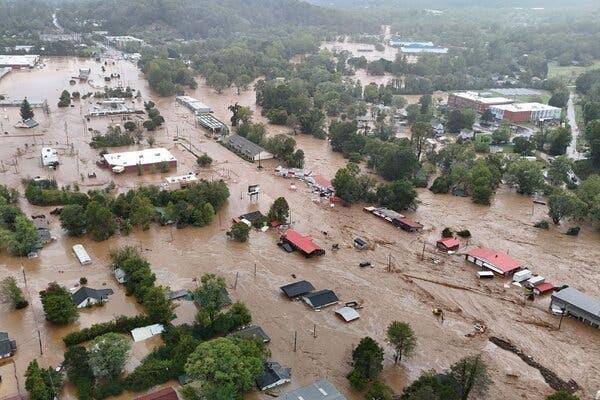 Epic flooding in North Carolina’s ‘own Hurricane Katrina’
Epic flooding in North Carolina’s ‘own Hurricane Katrina’
Helene’s swath of destruction has caused historic rainfall, flooding, power outages and 140-mile-an-hour winds across the Southeast. But it was North Carolina that bore the brunt of it Saturday with vast swaths of cities like Asheville underwater, residents trapped in their homes with no lights or food and few functioning roads for rescue workers to help them. Helene, Gov. Roy Cooper declared, had become “one of the worst storms in modern history for parts of North Carolina.” Zeb Smathers, the mayor of Canton, N.C., took to Facebook during a quick break from responding to what he described as “an unimaginable and horrific disaster.” “I have limited time to post, but this is the first message I’ve been able to share following the apocalyptic flooding that hit us” and breakdowns in cellular communications that followed, Smathers wrote. “My heart is broken, not only for our town but for the entire region.” More than 400 roads remained closed in the Tar Heel State, including “all roads in Western NC,” the North Carolina Department of Transportation said in a post on X. “Remember: As crews work to clear and inspect roads and bridges, please give them room.” Crews needed more than just room to operate. Well over 2 feet of rain had fallen across the state’s mountainous region in recent days thanks to a rare confluence of weather patterns over the eastern U.S. before Helene arrived in Florida on Thursday night. Tiny Busick in Yancey County along the western border with Tennessee, recorded 29.58 inches in just 48 hours. In Asheville, record high levels were set on the French Broad River and the Swannanoa River near the Biltmore estate. The historic Biltmore Village nearby was nearly submerged after Helene tore through the area, according to aerial footage. At least 5,000 emergency calls to 911 were fielded since Sept. 26. And with more than 200 North Carolinians requiring rescue from following Helene’s torrential rains, local, state, and federal officials mobilized to help. North Carolina, like Georgia and Alabama, activated hundreds of its own National Guard, and the governors of Maryland, and at least 17 other states sent Guard units of their own. Three federal teams were also deployed, and supplies were being airlifted in Saturday as and search and rescue operations continued throughout the state, Cooper said. Helene made landfall at about 11:10 p.m. ET Thursday near Perry, Florida, becoming the first known Category 4 storm to hit Florida’s Big Bend region since records began in 1851. The storm continued its push across western Kentucky on Saturday, and was expected to slowly move southeast, then east along the Kentucky-Tennessee border through the weekend, the National Hurricane Center said.
Biden briefed on ‘tragic loss of life,’ devastation
On Saturday, President Joe Biden approved emergency disaster relief aid for Tennessee. On Saturday evening, Biden was briefed on the impacts of Helene on multiple Southeastern states, including Florida, Georgia, North Carolina, South Carolina, Alabama, and Tennessee, by Homeland Security Advisor Liz Sherwood-Randall and Deanne Criswell, the administrator of the Federal Emergency Management Agency (FEMA). “Criswell described the tragic loss of life across the region and the devastation in the Big Bend communities of Florida that she visited today,” a statement from the White House said. Criswell will travel to Georgia on Sunday and North Carolina on Monday, it said, as part of the administration’s effort to speed support to survivors and deploy more search and rescue teams to “accelerate recovery efforts” in North Carolina. “The President will be briefed on an ongoing basis through the weekend,” the White House said.
Downed trees, power lines across region
High winds gusting up to hurricane strength brought down trees, power lines and cell towers across the region. Dozens of deaths have been attributed to Helene’s onslaught, according to authorities and media reports across the Southeast. A tally of the deaths approached 50 on Saturday morning, and officials said they expected the death toll to keep rising as they continued to go door-to-door in the aftermath of the storm. According to the USA TODAY power outage map, there were 635,887 total outages reported in North Carolina on Saturday afternoon. In response, crews from across the United States were on scene to help with immediate restoration and repair efforts, North Carolina’s Department of Public Safety said. On Friday night, 16 shelters in the state housed about 1,100 residents. With cellphone service spotty in western areas of the state, telecom companies activated “disaster roaming,” “allowing any phone on any cellular network to access any available network to connect to,” according to the state’s public safety department. Statewide, at least 29 North Carolina counties and 52 towns and cities issued state of emergency announcements, in addition to the statewide emergency declaration Cooper issued on Wednesday in advance of the storm. “This is a historic and catastrophic storm for Western North Carolina and I’m grateful to first responders working right now to save lives and evacuate residents,” Cooper said.
Why is Helene so destructive?
Forecasters began warning last Tuesday that a confluence of weather patterns was coming together that would likely soak the region. A front overhead was going to interact with a plume of moisture being pulled in ahead of Helene. The rain “started well ahead of the storm, training up from the Gulf into our area, and circulation around the storm pushed moisture up from the extremely warm Gulf waters,” said David Easterling, a rain expert with NOAA’s National Climate Assessment Technical Support Unit. Interactions like this, with a band of moisture ahead of a tropical storm or hurricane, are called predecessor events and they’ve been documented in the past to cause heavy rains ahead of the arrival of tropical storms and hurricanes. Jet stream winds blowing aloft at more than 115 mph provided lift that further enhanced moisture in the developing storms. By Wednesday, the National Weather Service warned that rain in parts of the region could fall at rates up to 3 inches an hour. Satellite images showed how the cyclone and the upper level low to the northwest more or less merged on Wednesday, said David Roth, a meteorologist with the Weather Prediction Center. Along the Blue Ridge Mountains in North Carolina on Wednesday and Thursday, almost 10 inches of rain fell in Asheville and 8 inches in Tryon, according to preliminary weather service data. Another six inches fell over the two days in Bristol-Johnson, Tennessee and more than 4 inches in Knoxville. Helene’s massive circulation moved into the mix with more rain, and then transitioned into a post tropical cyclone. Rain flowing into rivers in the mountainous areas quickly turned into cataclysmic flooding, setting an all-time record high on the Pigeon River at Newport, Tennessee. At least three of the flood level records broken Friday were set more than a century ago, when the lingering remnants of one tropical system in July 1916 were followed by another, producing heavy rain. Floodwater, which weighs 1,700 pounds per cubic yard, washed away roads and cars and stranded residents in mountain communities. At Unicoi County Hospital in Erwin, Tennessee, floodwaters stranded 54 people on the roof. By Friday evening, record-breaking rainfall totals were reported in some Southeast locations, with more than a foot of rain across swaths of Georgia and South Carolina. Tennessee, Virginia, and West Virginia saw widespread amounts ranging from 4 to 7 inches. Eyepopping rainfall totals were measured elsewhere in the North Carolina mountains besides Busick. Mount Mitchell, the highest peak east of the Mississippi River and a landmark along the Blue Ridge Parkway, got hit with more than 2 feet. That rain in the high North Carolina mountains then created the raging torrents across the Southeast that forced people from their homes in the dead of night Friday along the Nolichucky River in eastern Tennessee.
Read more » click here
How the North Carolina Legislature Left Homes Vulnerable to Helene
Under pressure to control housing costs, Republican lawmakers rejected standards meant to protect against disasters, experts say.
The amount of rain that Tropical Storm Helene unleashed over North Carolina was so intense, no amount of preparation could have entirely prevented the destruction that ensued. But decisions made by state officials in the years leading up to Helene most likely made some of that damage worse, according to experts in building standards and disaster resilience. Over the past 15 years, North Carolina lawmakers have rejected limits on construction on steep slopes, which might have reduced the number of homes lost to landslides; blocked a rule requiring homes to be elevated above the height of an expected flood; weakened protections for wetlands, increasing the risk of dangerous storm water runoff; and slowed the adoption of updated building codes, making it harder for the state to qualify for federal climate-resilience grants. Those decisions reflect the influence of North Carolina’s home building industry, which has consistently fought rules forcing its members to construct homes to higher, more expensive standards, according to Kim Wooten, an engineer who serves on the North Carolina Building Code Council, the group that sets home building requirements for the state. “The home builders association has fought every bill that has come before the General Assembly to try to improve life safety,” said Ms. Wooten, who works for Facilities Strategies Group, a company that specializes in building engineering. She said that state lawmakers, many of whom are themselves home builders or have received campaign contributions from the industry, “vote for bills that line their pocketbooks and make home building cheaper.” Chris Millis, director of regulatory affairs for the North Carolina Home Builders Association, said his industry is focused on reducing housing costs but added: “We do not pit affordability against regulations necessary for the protection of public safety.” In 2009 and 2010, lawmakers from the state’s mountainous western region wanted statewide rules to restrict construction on slopes with a high or moderate risk of landslides. Their legislation failed in the face of pushback from the home building and real estate industries, according to Pricey Harrison, a state lawmaker who supported the restrictions. Mr. Millis said statewide rules are unnecessary because local governments have rules about building on hillsides. Ms. Harrison said a statewide standard would be more effective. The push to build on hillsides reflected the growing demand in North Carolina for mountain retreats that would attract tourist dollars, according to Robert S. Young, a professor at Western Carolina University who focuses on climate resilience. “Everybody wants a view in their vacation home,” Dr. Young said in an interview. “It’s really hard to shut off that kind of economic activity in a small local community.” Efforts to weaken building standards in North Carolina picked up steam after Republicans won control of both houses of the state legislature in 2010. In 2011, lawmakers proposed a law that limited the ability of local officials to account for sea-level rise in their planning. The comedian Stephen Colbert panned the change, quipping: “If your science gives you a result you don’t like, pass a law saying the result is illegal. Problem solved.” Two years later, lawmakers overhauled the way North Carolina updates its building codes. That change attracted far less attention than the sea-level rule — but would be more consequential for Helene. Every three years, the International Code Council, a nonprofit organization based in Washington, D.C., issues new model building codes developed by engineers, architects, home builders and local officials. Most states adopt a version of those model codes, which reflect the latest advances in safety and design. But in 2013, the North Carolina legislature decided that the state would update its codes every six years, instead of every three. The change proved important. In 2015, the International Code Council added a requirement that new homes in flood zones be built at least one foot above the projected height of a major flood. North Carolina did not adopt that version of the building code until 2019. And even then, the state stripped out the new flood-prevention standard. Rather than make elevation mandatory in flood zones around North Carolina, the state decided that the requirement should only apply if local officials chose to adopt it. The decision most likely left more homes exposed to flooding, according to Chad Berginnis, executive director of the national Association of State Floodplain Managers. But Mark Brody, a Republican state lawmaker, said the state was right to leave such decisions to local officials. “There are places that are designated floodplains that never flood,” Mr. Brody said in an interview. “And the locals would know this better than having a blanket state rule.” The Republican legislature took other steps that may have exacerbated flooding. In 2014, lawmakers passed laws to weaken protection for wetlands, which can help reduce flood damage by absorbing excess rainfall, according to Brooks Rainey Pearson, a senior attorney at the Southern Environmental Law Center. Three years later, the legislature made it easier for developers to pave green spaces, increasing the risk of flooding caused by heavy rains, according to the Southern Environmental Law Center. Mr. Millis, of the home builders association, said that “storm water is heavily regulated in North Carolina.” Last year, efforts by Republican lawmakers to ease the state’s building codes erupted into open confrontation with Gov. Roy Cooper, a Democrat. The legislature passed a law that essentially blocked the state from adopting new building codes until 2031. The law also included smaller changes, such as preventing local building inspectors from ensuring that home builders correctly install protective sheathing on homes exposed to winds of 140 miles per hour or less. Governor Cooper vetoed the bill, saying it would “wipe out years of work to make homes safer.” But Republicans overrode his veto. The new law has made it harder for North Carolina to qualify for Federal Emergency Management Agency grants to fund climate-resilient construction projects, which prioritize states with up-to-date building codes. The governor’s office has estimated that North Carolina has lost $70 million in grants because of the 2023 law. Then, this summer, the Republican legislature again passed a series of reforms weakening the state’s approach to building standards. The law gave the legislature, rather than the governor, the authority to appoint or approve members of the state’s powerful building code council. It removed the requirement that the council include licensed architects. And it included other changes, such as preventing the state from requiring that electric water heaters be located off the ground to protect from flooding. Governor Cooper again vetoed the legislation, saying it “limits the knowledge and practical experience of the body tasked with ensuring all buildings are safely designed.” Republicans again used their supermajority to override his veto. The governor’s office declined to comment. Mr. Brody, the Republican state lawmaker, said the home building industry is like any other interest group seeking to advance its agenda. “Campaign contributions are there, but the General Assembly makes wise decisions,” Mr. Brody said. He added that construction bills “get pretty well researched and vetted through. Most of them are just plain common sense.” The home builders association has contributed $4.3 million to North Carolina politicians over the past three decades, with Republicans receiving nearly twice as much as Democrats, according to data from Open Secrets, which tracks political spending. The association gave Roy Cooper $10,500 during his two gubernatorial campaigns, records show. In the aftermath of Hurricane Helene, insurance money and federal recovery funds will fuel a rush of construction in the areas hit by the storm. Building standards will help determine how well that new construction fares against future disasters, which are becoming more frequent and severe because of climate change. Ms. Wooten, the engineer on the building code council, said she was not optimistic that the damage from Helene would change how North Carolina approached building codes. “Money talks,” Ms. Wooten said. “Politicians want to get re-elected, and they are going to go where the money is.”
Read more » click here
This and That –
 Fear the deer: Crash data illuminates America’s deadliest animal
Fear the deer: Crash data illuminates America’s deadliest animal
Behold the deer, the deadliest beast in North America. Deer are responsible for the deaths of about 440 of the estimated 458 Americans killed in physical confrontations with wildlife in an average year, according to Utah State University biologist Mike Conover, employing some educated guesswork in the latest edition of “Human-Wildlife Interactions.” Those deer-inflicted fatalities are not, so far as we know, caused by deer-on-human predation. They’re the unfortunate result of more than 2 million people a year plowing into deer with their sedans and SUVs, usually on a two-lane road, often at high speed. You might wonder: Where and when am I most likely to hit a deer? And how can I avoid it? To shed light on this herbivorous hazard, we turned, of course, to data. Specifically, we analyzed more than 1 million animal-vehicle collisions compiled by Calumn Cunningham, Laura Prugh and their colleagues at the University of Washington for a recent paper published in Current Biology. They estimate deer were involved in more than 90 percent of the collisions, which occurred in 23 states between 1994 and 2021. With a few exceptions, the data show deer are at their most dangerous in November. Indeed, the deer threat peaks just before Thanksgiving — typically Nov. 7 through 14 — when you’re about three times more likely to hit a deer than at any other time of year. Experienced deer hunters can probably guess why driving in November can turn into Russian roulette on certain highways and byways: In much of the country, that’s rutting season. And during the rut, deer focus on procreation, not self-preservation. Marianne Gauldin of the Alabama Wildlife and Freshwater Fisheries Division compares rutting bucks to teenage boys. “They are hyper-focused on the opportunity to breed, and they therefore lose some of their wits,” Gauldin said. “They are full tilt looking for does, chasing does and running after does for the opportunity to breed. And they are doing this with tunnel vision … literally running across the road.” Does share similar distractions. They’re either in estrus — hormonally receptive to sex and looking to breed — or fleeing hot-and-bothered bucks until their cycles catch up. Collisions occur more often in states with the most white-tailed deer — which experts say tend to have a shorter, sharper rut than the western mule deer — and in states with long stretches of busy rural roads. Separate insurance claim data from State Farm, which is widely cited in academic research, shows a driver out minding her own business on the wending, bending roads of West Virginia had a 1 in 35 chance of hitting an animal between June 2021 and June 2022, making the Mountain State easily the most dangerous in terms of deer-car collisions. Montana and Michigan were next. D.C. drivers, by contrast, had only a 1 in 907 chance of stopping a buck while driving down Pennsylvania Avenue, or anywhere else. Fun fact: Deer are responsible for at least 69 percent of animal-related accident claims, according to State Farm. Another 12 percent of claims involve unidentified animals, many of which could be deer that bounded off before the driver got a good look at them or were mangled beyond recognition in the crash. The third-most-dangerous animals on the road are undifferentiated rodents, which are cited in 5 percent of all animal-related accident claims. However, State Farm spokesperson Dave Phillips noted that many of the drivers never make contact with said rodent: The vast majority of those accidents occur when motorists swerve to avoid a suicidal squirrel or moseying marmot. Our more calendar-conscious readers will note that peak deer-crash season coincides with another big moment in November: the first week of daylight saving time, which begins the first Sunday of the month. And the University of Washington team has found that the two events are not unrelated. To understand why, we need to spelunk deeper into their data, which breaks new ground by including the exact location, date and hour of all these deer disasters. When we glance at a chart of accidents that includes time of day and time of year, one fact strikes us right between the headlights: Evening, the twilight of each day — especially in November! — is the hour of the Götterdeermmerung. Conveniently for us, the University of Washington scholars used accident coordinates and some basic weather math to calculate exactly when the sun would have risen or set at each location. It turns out that deer danger skyrockets about 30 minutes after sunset and remains extraordinarily elevated for almost half an hour. Those with deer-behavior expertise say drivers should be on high alert as darkness falls in autumn — especially when careening through the deer’s favorite transitional habitats, the forest-edge ecosystem created by roads and other developments. But they urge us to take a lesson from the thousands of people who land in hospitals and body shops each year after attempting to avoid a turtle or chipmunk: If you do see a deer, don’t swerve. “Slow down as much as you can, obviously, coming up to it,” said Karlin Gill of the National Deer Association, a hunting and conservation organization. “But if it’s unavoidable and you’re going to hit the deer, don’t try and swerve out of the way. That can cause an even worse car wreck, and you still might hit the deer regardless.” Deer crashes also rise in the morning, about 30 minutes before sunrise, but the number is significantly lower than after sunset. To understand why, we need to dig deeper into both deer and human activity patterns. Biologist after biologist told us deer are crepuscular, meaning they’re most active at dawn and dusk. When Texas A&M University wildlife scientist Stephen Webb and his colleagues fitted GPS trackers onto white-tailed deer in Oklahoma, they found deer movement peaks at both sunrise and sunset. “Deer, unlike humans, don’t lay down for eight hours at night and then get up and move throughout the day,” said Gill , who, as a hunter, closely examines deer behavior. “They actually go through a cycle where they’ll lay down, bed, get up, eat, lay down, bed, get up, eat, and they’ll do this throughout a 24-hour period.” But if deer are equally active at dawn and dusk, why are they so much more likely to be hit in the evening? To untangle that one, we need to examine another somewhat crepuscular species: the American commuter. Our commutes also peak in the morning and evening, but we’re much more likely to be driving at dusk than we are at dawn, and we stay on the roads even as darkness falls, and the deer start moving — often squarely into our headlights. It’s a matter of visibility. Deer are just as active two hours before dusk as they are two hours after, yet we’re about 14 times more likely to hit a deer after sundown than we are before. And, as Cunningham notes, right at the peak of the whitetail rut, we throw another variable into the stew: We end daylight saving time. Suddenly, as far as the deer are concerned, our 6 p.m. commute happens an hour later. Millions of drivers find themselves contending with lower visibility just as sex hormones flood the local deer population. “It’s like one of the grandest-scale natural experiments that we can come up with, where humans impose these very arbitrary and abrupt changes on the wildlife,” Cunningham told us from his native Tasmania (he’s at the University of Washington as a Fulbright fellow). People living on the far eastern side of a time zone are about 1.35 times as likely to hit a deer as folks on the far western edge, since folks in the east are more likely to be driving home in the dark. Similarly, folks in Northern states, where days are short and darkness rules the winter, are 1.86 times more likely to hit a deer than their friends in America’s sunny South. Taking these effects into account, the University of Washington team estimates that “falling back” causes a 16 percent jump in deer carnage in the weeks after the shift. It’s possible that adopting permanent daylight saving time would thus save the lives of more than 36,000 deer and 33 humans each year. On the down side, chronobiologist Eva Winnebeck of the University of Surrey argues that any gains might be offset by an increase in deaths spurred by the chronic drowsiness that would inevitably set in if our solar-powered circadian rhythms were forced to endure a never-ending disconnect between the sun and clocks set permanently to daylight saving time. Here at the Department of Data, we’ve found a strong connection between happiness and the great outdoors. So, we’re partial to any move that would give us more daylight hours to get out after work and fish, run or dominate the competitive wood-chopping circuit, circadian rhythms be darned.
Read more » click here
Watch out for deer
NCDOT warns motorists across North Carolina to stay alert for deer now that fall has arrived. Every year during late autumn, auto and body shops across the region brace for a bumper crop of business, comprised of an influx of cars with damage from collisions with deer. Beginning in October, roads across the state become hazardous as North Carolina’s deer population fans out, lurking on highway shoulders in search of food and potential mates. It’s the deadliest time of the year for deer, which also pose a particular danger to motorists. Nearly half of vehicle accidents involving white-tail deer occur from October to December. Deer accidents typically begin rising in October, peak in November and begin dropping off after December, according to the Insurance Institute for Highway Safety. Deer are crepuscular mammals, meaning they’re most active at dawn and dusk – which, following the onset of daylight savings time, places them near roads and byways precisely when large numbers of residents are commuting to and from work.
NCDOT has some helpful tips for motorists in regard to deer-vehicle crashes:
- Although it does not decrease the risk of being in a crash, wearing a seat belt gives you a better chance of avoiding or minimizing injuries if you hit a deer or other animal.
- Always maintain a safe amount of distance between your vehicle and others, especially at night. If the vehicle ahead of you hits a deer, you could also become involved in a crash.
- Slowdown in areas posted with deer crossing signs and in heavily wooded areas, especially during the late afternoon and evening.
- Most deer-vehicle crashes occur where deer are more likely to travel, near bridges or overpasses, railroad tracks, streams, and ditches. Be vigilant when passing through potentially risky landscapes.
- Drive with high beams on when possible and watch for eyes reflecting in the headlights.
- Deer often travel in groups, so if you see one deer near a road, be alert that others may be around.
- If you see deer near a road, slow down and blow your horn with one long blast.
- Do not swerve to avoid a collision with deer. This could cause you to lose control of your vehicle, increasing the risk of it flipping over, veering into oncoming traffic, or overcorrecting and running off the road and causing a more serious crash.
Officials say the most crashes occur between 6 p.m. and midnight, accounting for about 45% of the overall total. With the end of daylight savings time at 2 a.m. Sunday, Nov. 1, the time shift increases the chance of deer being by roadways when drivers are traveling in the dark, especially for their evening commute. If your vehicle does strike a deer, officials say do not touch the animal. A frightened and wounded deer can be dangerous or further injure itself. Get your vehicle off the road if possible and call 911.
Read more » click here
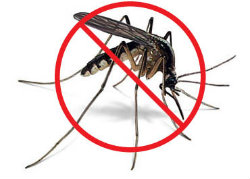
The Wilmington area is buzzing with mosquitoes. Here’s why and what to do.
Tropical Storm Debby’s deluges flooded parts of the Wilmington area that hadn’t seen water in years, turning them into new mosquito breeding grounds.
The social media comments about the Bailey Zimmerman show at Wilmington’s Live Oak Bank Pavilion last weekend were overwhelmingly positive. But a lot of the buzz about the rising country music star’s concert was also about another attendee, and this one wasn’t as welcome as the Illinois-born crooner: Mosquitoes. Many concertgoers lamented about the swarming bloodsuckers that have made venturing outside along the Cape Fear River or near Greenfield Lake a somewhat miserable experience in recent days. Jeff Suggs, head of New Hanover County’s mosquito control program, said Eagles Island across from downtown Wilmington is largely to blame for the recent invasion. “They are swarming and we’re trying to knock them down this week,” he said, mentioning the stepped-up efforts his department and Brunswick County − which manages Eagles Island − are conducting. “But when those floodwater mosquitoes come off, they come off in astronomical numbers.” Thanks to Tropical Storm Debby, the Port City isn’t alone in dealing with swarms of the biting insects even though the soggy weather system left Southeastern North Carolina nearly two weeks ago.
Why are the bugs so bad?
Nowhere is going to see 15 inches or more of rain in just a few days without impacts, and the Cape Fear region is no different. Flooding, which is still impacting some parts of the region, sent water into areas that had largely been dry for months or even years. “Some areas that haven’t had water for years have it now,” Suggs said, adding that some floodwater mosquito eggs that have laid dormant in the soil for years since as far back as 2018’s Hurricane Florence − the last big flooding event for much of the Wilmington area − are likely now getting activated. And thanks to climate change, the local biting season could be about to get worse for longer as spring and fall temperatures increase as more and more heat-trapping gasses are pumped into the atmosphere, allowing mosquitoes to have a longer season to breed, bite, and spread viruses. A 2023 analysis by Climate Central found Wilmington had 11 more “mosquito days” − for a total of 221 − in 2022 compared to 1979. The nonprofit climate communications group defined “mosquito days” as having an average relative humidity of 42% or higher and daily minimum and maximum temperatures between 50 to 95 degrees. While the Port City’s numbers are trending in the wrong direction, it was better than what researchers found in Raleigh-Durham (+27 days), Greenville (+22 day) and Asheville (+22 days). Southeastern North Carolina is home to more than 40 species of mosquitoes, several of which are non-native but have been able to adapt to the region’s climate. That increase in species, their range and potentially numbers is expected to continue as the weather gets warmer and more humid.
Is the surge in mosquitoes a health concern?
From a human health perspective, officials are more worried about the viruses the mosquitoes can carry more than the biting and general annoyance they can bring to people while outside. Those health risks include the Zika virus, dengue fever, Chikungunya virus, Eastern Equine Encephalitis and West Nile virus. Suggs said his department is able to do a lot of its own virus testing, and so far there haven’t been any positive pulls found in trapped mosquitoes so far. Ironically, the region was largely having a good mosquito year prior to Debby largely thanks to the drought that started in spring and continued up until mid-July. “Some traps where we would regularly see 60 mosquitoes a night, we were only seeing four,” Suggs said. “And then Debby came along. But as far as them being a nuisance before that, we were having a good summer.”
What’s being done about it?
Suggs said his crews have stepped up their spraying efforts, doubling back to hit areas − like downtown − that are especially buzzing with the bugs. Officials also treated some areas before Debby hit with larvicide to pre-empt them being used as mosquito hatcheries. In Brunswick County, county spokesperson Meagan Kascsak said crews also have stepped up their spraying efforts post-Debby to try and get ahead of the swarms. But Suggs said residents might just been to grin and bear it for a few weeks until the mosquitoes live out their mercifully short life cycle. “It’s nature,” he said. “We can only battle them so hard.”
How can I protect myself?
Experts say people can help limit their exposure to mosquitoes by removing pools or containers of stagnant water, including in their gutters, from their yards, since most mosquito species don’t generally venture more than a few hundred meters from their homes when hunting. Avoiding activities at dusk and dawn and wearing long clothing also can help limit potential exposures.
Sources and info
Several government agencies offer information on how to make your home less attractive to mosquitoes and the potential threats posed by the bloodsucking insects. Local mosquito control offices also have information about local spraying schedules and how to request additional treatments.
- U.S. Centers for Disease Control and Prevention (CDC):
https://www.cdc.gov/mosquitoes/index.html - N.C. Department of Health and Human Services (DHHS):
https://www.ncdhhs.gov/after-storm-mosquitoes - New Hanover County Mosquito Control:
https://www.nhcgov.com/674/Mosquito-Control / 910-798-6713 - Brunswick County Mosquito Control:
https://www.brunswickcountync.gov/349/Mosquito-Control / 910-253-2515 - Pender County Mosquito Control Division:
https://pendercountync.gov/228/Mosquito-Control-Division / 910-259-1230
- U.S. Centers for Disease Control and Prevention (CDC):
Read more » click here
THB Mosquito Control
Current EPA protocol is that spraying is complaint driven
The Town is unable to just spray as they had in the past
. 1) Complaint based
. 2) Citizen request
. 3) Proactively monitor hot spots
They recommend that you get rid of any standing water on your property that you can
Urged everyone to call Town Hall if they have mosquito issues so that they can spray
THB Newsletter (10/08/24)
Aerial Spraying for Mosquitos
Brunswick County has notified the Town that aerial spraying for mosquitoes in the County will begin Friday, October 11, 2024, weather permitting. The countywide aerial spraying is part of Brunswick County’s emergency response to the increased mosquito populations caused by heavy rainfall and flooding from Tropical Storm Debby and Potential Tropical Cyclone #8.
VDCI crews are scheduled to begin using airplanes to spray insecticides over the county during the week of October 11th through October 18th, weather permitting. Spraying will start at dusk. Click here to view the aerial spraying schedule and map of planned routes. Exact routes are subject to change depending on weather conditions. If weather conditions delay spraying, it will begin Monday, October 14th or any subsequent day as weather conditions allow.
When applied by a licensed vector control professional who follows label instructions, aerial spraying poses minimal risk to people, pets, animals and the environment. Aerial spraying uses very low volumes of either adulticide or larvicide, so you are not likely to breathe or touch anything that has enough insecticide on it to harm you. Individuals located in the areas being sprayed are encouraged to avoid being outside during evening hours if possible as there is a possibility that spraying adulticides can cause eye irritation if a person is outside when spraying takes place.
Click here to read the full press release from Brunswick County and for information for Beekeepers.
For additional questions, contact Brunswick County Mosquito Control at 910.253.2515 or email MosquitoControl@brunswickcountync.gov.
Factoid That May Interest Only Me –
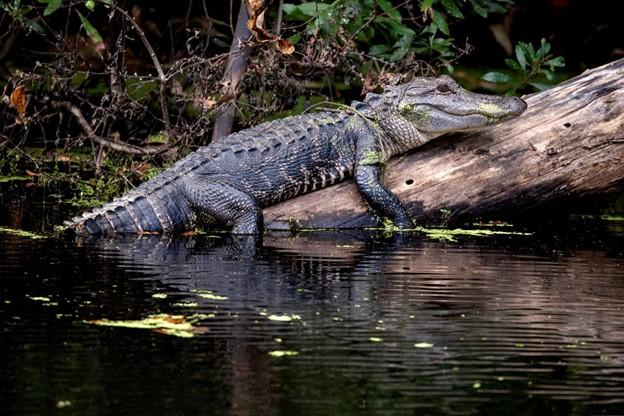 Gators’ more frequent appearances make splash along coast
Gators’ more frequent appearances make splash along coast
Did you hear the one about the alligator? An alligator walks into … a road, a pool, a miniature golf course, onto a beach, underneath a car, up to the front door of a storefront, by a back entrance of a police station. Stop me if you read about this while perusing the headlines of your local newspaper, heard about it on the 6 o’clock news, or saw it plastered across social media platforms this past summer. Alligators have made quite the splash (pun intended) in recent months here in southeastern North Carolina, where seemingly numerous public appearances by these living dinosaurs have produced dramatic headlines and videos shared not only across the state, but the country. But these typically reclusive reptiles aren’t looking for all the attention they’ve been getting, experts say. They just want to be left alone. The problem is, they’re being squeezed out of seclusion as housing developments and retail centers continue to crop up along the coast. “The ever-growing population along the coast of North Carolina is the biggest threat to wildlife in general,” said John Harrelson, a wildlife biologist with the North Carolina Wildlife Resources Commission. “Habitat loss is the biggest threat to wildlife in general, not just alligators, and when people move in and we build communities in places that haven’t historically had people, then that leads to lots of interactions.” And the more interactions that occur, the more comfortable alligators become around people. Harrelson puts alligators into one of two categories: country alligators and city alligators. Country alligators inhabit areas up the Northeast Cape Fear River. He said that those alligators generally try their best to steer clear of humans, he said. But city alligators get used to seeing people and, just like squirrels, birds, deer, and other animals, they become habituated, “realizing that people, for the most part, don’t mean them any harm and that there’s nothing to be worried about,” Harrelson said. Think of it like a cost-benefit analysis where an alligator weighs the risk of being around people and decides whether the reward is worth the risk. “And often times the reward is great enough,” Harrelson said. While development strips away their natural habitat, it tends to provide pockets of prime real estate for alligators in the form of retention ponds. Harrelson works in the commission’s District 4, which includes Brunswick County, and is home to a reported 30 scenic golf courses (think about all of the water hazards — well, not a hazard from a gator’s point of view — on just one of those courses). Brunswick, Columbus, Craven, New Hanover, Onslow, and Pender counties are home to the largest populations of American alligators in North Carolina and their turf runs from the state’s coastal plains to Texas. With its barrier island beaches, proximity to Wilmington and Myrtle Beach, South Carolina, and its numerous golf courses, Brunswick County has become a draw for retirees who, for many, move in from areas where there are no alligators. Pair that with the influx of tourists who flock to the county each summer – Oak Island’s population more than quintuples between May and August – and odds are high people are going to encounter alligators. Boiling Spring Lakes Police Capt. Windy Hager knows that when tourism season picks up, so too do the number of calls going into the Brunswick County town’s law enforcement center about alligator sightings. “When it’s warmer (alligators) become more active and, when you’ve got people who are not familiar with alligators they get a little excited about, ‘Oh, there’s one in the lake!’ Well, yes, that’s where they live and that’s what we have to tell them a lot of times,” Hager said. Hager has lived in the area more than 10 years. She’s accustomed to seeing alligators pretty regularly in their own habitat. But one had to be removed from a swimming pool a couple of weeks ago and the unnamed storm that pummeled Brunswick County with catastrophic rainfall Sept. 16 means there’s a lot of water in places that were previously dry. “I know that there’s two (alligators) in what used to be somebody’s front yard right now in the city because their front yard is flooded,” Hager said. “But they’re just doing their thing and the people who live there are giving them their space. The people are not messing with them and the alligators aren’t messing with the people so they’re sharing space right now.” Two days before he spoke in a telephone interview with Coastal Review, Sunset Beach Police Animal Control Officer Bill Arp had removed a small alligator hanging out underneath a car. “They’ll wind up in people’s garages and on people’s porches, underneath decks, under cars. We find them all over the place,” he said. “Unfortunately, because of such huge development down here, their habitat is starting to shrink and that’s what’s happening. People are calling us and wondering, ‘Why’s it under my car? Why are they on my porch? Why are they in my garage?’ Well, that’s why because the development is robbing them of their other habitat.” Alligator Do’s and Don’ts If an alligator settles in an area near you, wildlife and law enforcement officials have tips on how to safely cohabitate. “A lot of people think, even with birds and deer, it’s nice to feed them,” Arp said. “But alligators, you don’t. Everybody knows an alligator is an apex predator. They’re nice to watch. They’re nice to take pictures of, but to feed them, that’s not a good idea.” Remember what Harrelson said earlier in the story about city alligators? “Individual people feeding alligators is the worst thing you can do,” he said. “Alligators are wild animals and they’ve got to work for their food. An easy meal means, ‘hey I don’t have to continue to fail and fail and make all these attempts when I’m not successful. I can just wait for this person to walk over and, if I approach them, they’re going to give me chicken or bread or marshmallows, a fish scrap or whatever else they’ve got.’ We deal with this all the time, particularly with folks who aren’t locals.” It is illegal to feed alligators. It is also illegal to kill them. American alligators are protected by the Endangered Species Act as threatened. In North Carolina, a permit is required to hunt alligators. The monthlong season is limited to population control at the request of municipalities in Brunswick, Carteret, Columbus, Craven, Hyde, Jones, New Hanover, Onslow, Pamlico, and Pender counties, according to the WRC website. “The Commission does not plan to issue permits to take American alligators, outside of municipality requested population reduction hunts, until further research is conducted to determine the conditions under which alligator populations would be sustained while allowing limited harvest,” the site states. Harrelson said that alligators are relocated only as a last resort because they, like other wildlife, have a propensity to travel long distances to return to where they were captured. “This is something that we face ongoing and, as biologists, something that we have to figure out how to address going forward because our agency isn’t going to pick up and move animals,” Harrelson said. “We want to let wildlife be wildlife for as long as we can and maintain the ecosystems that are out there.” As people build, alligators move. Males can occupy areas greater than 2 miles so, when they move, they’re crossing roads, ditches, and yards. An alligator may be removed from a property when it is considered a nuisance – at least 4 feet long and poses a threat to people, pets, or property. To report a potential nuisance alligator, call the N.C. Wildlife Helpline at 866-318-2401. Experts say simply spraying an alligator with a water hose usually prompts the animal to move away. If you’re taking a walk and spot an alligator in or near your path, give the alligator a wide berth and go around it. Never walk up to one or try to touch one. “When an alligator is on a sidewalk or up on a roadway, he’s not hunting, he’s not searching out food. If we give them an opportunity to make that move on their own, most of the time, they will,” Harrelson said. “Our biggest thing, of course, is to keep people safe and then let the animals be animals. That’s what we’re always striving toward.”
Read more » click here

Black bears are common along the NC coast.
Here’s why and what to know about their habits.
More bears live in the state’s coastal plain than in North Carolina’s mountains. They also are generally larger. And yes, they do hibernate
When people think of bears in North Carolina, most thoughts probably drift to the mountains in the higher elevations of the state and places like Great Smoky Mountain National Park. But black bears − the only bear species found in the Tar Heel State − are found across North Carolina, and their population is actually larger in the state’s coastal plain than in the mountains. Potentially even more surprising to some is that many bears at the coast, especially females, hibernate like their brethren where frost and snow is a lot more common.
Bears at the coast?
Yes, there are bears − lots of them − near North Carolina’s beaches and in its coastal forests and swamps. The ability of the bear to bounce back in the state is one of North Carolina’s great wildlife success stories. Unregulated hunting and loss of habitat led to bears being driven into the most isolated pockets of swamp forests and mountain areas for most of the last century. But starting in the 1970s with the establishment of bear sanctuaries, strict management strategies, and educating the public about the state’s omnivorous residents, bear numbers have surged back. Today, more than 20,000 bears are estimated to roam North Carolina, and more than half are in the eastern part of the state. Coastal North Carolina is also home to some of the largest black bears in the world, thanks to an ample food supply of farmers’ crops, a relatively mild climate, and many large, protected areas − like state game lands and federal wildlife refuges − that offer the bears valuable habitat. According to the wildlife commission, the largest bear ever killed in North Carolina was an 880-pound male taken in Craven County in 1998. The state’s propensity for lots of bears also attracts hunters and fuels economies in many rural areas, with more than 4,000 animals taken during the 2022 bear season − up 11% over 2021 figures. Of those, more than 2,500 bears were taken along the coast. Around the Wilmington area, hunters harvested 34 bears in Brunswick County, 92 in Pender County, and seven in New Hanover County. The popularity, size, and sheer number of bears in Eastern North Carolina also has spawned its own festival, the National Black Bear Festival, which takes place every June in Plymouth, Washington County.
What is hibernation?
In its very basic form, animals enter hibernation as a way to reduce their metabolism in response to a decrease in food supply and sometimes falling temperatures. When bears, in this case, enter hibernation, their internal body clocks slow down. That leads to lower heart rates, reduced breathing, and lower oxygen consumption. The animal’s temperature also drops. According to biologists, this can be by as much as 15 degrees for bears. To prepare for hibernation, bears step up their eating, putting on up to 3 pounds a day in the fall and sometimes into winter. That can mean foraging for a meal for up to 20 hours a day, and they are typically most active at dawn and dusk.
Why do N.C. coastal bears hibernate?
While black bears in colder, northern climates can hibernate for six months or longer, it is generally for shorter periods in North Carolina. But they do hibernate even along the N.C. coast, especially female bears. Males may den for short periods but may also exhibit lethargic behavior during the winter if they stay awake. “Bears studied in eastern North Carolina by radio-telemetry entered dens as early as November and as late as January. These same bears exited dens as early as February and as late as April,” states information on the wildlife commission’s website. “This results in the possibility of bear sightings and roadkills in all months and the misconception that coastal bears do not hibernate. Only human disturbance interrupts these periods of hibernation in North Carolina’s bears.” Females will give birth during their hibernation, only waking up and emerging with her cubs in the spring when they are able to walk and feed on solid food.
Where do they hibernate?
With few rock formations to den in or under in Eastern N.C., coastal bears will often hibernate in thick vegetation on the ground. They also have been found to use tree cavities and burrow under fallen trees and logs. Bears finding accommodations under abandoned or seldom used human structures, like porches and barns, also has been observed.
What about the impact of climate change on N.C. bears?
Scientists are clear that North Carolina is facing a warming climate in the coming years. The only real question is by how much temperatures will increase. As warmer weather becomes the norm, North Carolina’s coastal black bear might start to mimic behavior patterns of bears in other Southern states that already deal with a hotter, year-round climate. That could mean shorter, or no, hibernation for male bears, increased pressure on winter food supplies, and a greater chance of human-bear conflicts as both species share the same space for longer periods of time. But black bears also have proven time and again to be very adaptable to changing conditions, including human encroachment on their habitats. That ability has seen them spread to all of North Carolina’s 100 counties, with number increasing even as the state’s population also continues to rise quickly.
Read more » click here
Bears are smart animals
Time to be smarter than the bear. Elimination of regular and easy food sources is the best deterrent and will cause him/her to move out of our location faster than any other reason. If the bear discovers the pattern of garbage cans going out in the evening, he/she will look for the cans each evening. Consider putting garbage cans out in the morning hours just before the truck arrives so that the bear does not discover cans full of food each week. Please reconsider feeding any other animals during warmer months with an outdoor supply of food because the bear will find it and eat what you put out, thus strengthening his/her reason to remain here. Bird feeders may also be destroyed for the bear to secure the stored grains.
Consistent patterns in OR will help to move the bear to new territory. If some food sources remain available, he/she will find them and remain here. Keep the food sources out of his/her reach. Please consider staying with this habit until the acorns begin to drop in the fall. We have few oak trees within OR, so that source of food is limited. The bear will seek an area with a greater source of food prior to winter.
Bears roam approximately ten miles in all directions to obtain food or shelter. If sources outside of the OR provide him/her with regular food, and our area provides the best shelter, he/ she will remain until late fall once again. Be aware of choices and be aware of walking in forested areas with dogs, etc. Black bears will avoid humans and dogs, but if you accidentally run into one at close proximity, do the following:
If you and he /she are walking toward each other, change your direction and do not run. Constantly check over the shoulder to see if the bear is following you or continuing in another direction.
- If you happen to get REALLY close to a bear, you can make yourself look as large as possible and yell loudly. A black bear will usually change direction.
- If there is a bear cub with a mother bear, stay as far away as possible. She will protect the cub at all costs, and you can be in great danger.
- Review the pamphlet put out by the NC Department of Wildlife:
https://www.ncwildlife.org/media/1458/download?attachment
Stay aware, stay smart, and stay safe.
Hot Button Issues –
Subjects that are important to people and about which they have strong opinions

Climate
For more information » click here.
There’s something happening here
What it is ain’t exactly clear
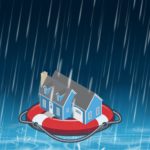
Flood Insurance Program
For more information » click here

National Flood Insurance Program: Reauthorization
Congress must periodically renew the NFIP’s statutory authority to operate. On September 26, 2024, the president signed legislation passed by Congress that extends the National Flood Insurance Program’s (NFIP’s) authorization to December 20, 2024.
Congress must now reauthorize the NFIP
by no later than 11:59 pm on December 20, 2024.

GenX
For more information » click here

Homeowners Insurance
For more information » click here
As a hearing looms, here’s where talks over a massive 99%coastal insurance rate hike stand
Insurers want to raise homeowners insurance premiums by 42% statewide and an eyewatering 99% in beach and coastal areas around Wilmington. State regulators have said no, triggering an Oct. 7 hearing
Negotiations between state regulators and insurance companies over a potentially massive rate increases for North Carolina homeowners are going down to the wire. In January the N.C. Rate Bureau, a 14-member board that represents the industry, submitted a proposal to raise homeowner insurance premiums by 42% statewide and an eyewatering 99% in beach and coastal areas around Wilmington. The proposal, after a public hearing, was swiftly and vocally rejected by N.C. Insurance Commissioner Mike Causey. “I heard from more people on this rate filing than any other while I’ve been commissioner,” Causey, who has been in office since 2017, said on Thursday, adding his agency received more than 25,000 comments − almost all of which were against it. “And I agreed with them.” The commissioner’s action triggered a judicial hearing, which is scheduled for Oct. 7.
As that hearing grows closer, here’s where things stand.
Why do the insurance companies want such a big rate increase?
In short, because they aren’t making money and are worried about the future. The N.C. Rate Bureau cited two main factors for the surprisingly large rate increase proposal. First, is the rising cost of pretty much everything, including labor and potential repairs, driven by inflation and the lingering impacts of labor and material shortages tied to the COVID-19 pandemic. The other is climate change, which is causing more frequent and widespread property destruction, particularly tied to bigger and stronger hurricanes, as the warming climate fuels more severe weather events. Damages in North Carolina tied to 2018’s Hurricane Florence, for example, were estimated to top $22 billion, with much of that hitting inland areas. Other factors that are playing a role in the proposed substantial increase include the moratorium that was put into place during the pandemic on any rate increases and the cost of reinsurance − basically insurance for the insurance companies themselves in case a large-scale disaster stretches their financial ability to respond. “It will be four years in November since we last requested a homeowners rate increase, and even the approved change was only a small percentage of what was requested,” said Jarred Chappell, chief operating officers with the rate bureau, in an email. “That has been the case over multiple rate filings, which has contributed to the ongoing rate need.”
Why can’t the insurance companies just raise rates?
North Carolina operates a regulated insurance market. That means that companies have to receive approval from state regulators to raise most rates, including those for homeowner and auto insurance. While some in the industry have said that limits competition in a somewhat closed market and doesn’t make North Carolina an attractive market for insurance companies, Causey disagrees. He said the current system, which attempts to balance the needs of consumers and industry, offers some security for both sides and somewhat ring fences North Carolina from seeing the problems other coastal states, like Florida and Louisiana, are experiencing. In those states, many insurance companies are pulling out in the wake of repeated natural disasters and an inability to charge rates they believe reflect their liability and ability to turn a profit. That, in turn, is forcing the state to create government-run insurance companies of last resort for folks who otherwise can’t get coverage, which generally offer higher premiums and less coverage to balance their books.
Do proposed rate increases always end up in a hearing?
Generally, no, because that costs both the state and industry time and money that they’d rather not spend. Causey, a Republican who is running for re-election this November against Democrat Natasha Marcus, said in most rate disputes his department and the rate bureau have been able to negotiate before a hearing date and reach a mutually acceptable agreement. “We have done that very successfully in the past and get settlements that are mostly favorable to consumers,” he said. That hasn’t happened in this case. “We are at an impasse,” Causey said. “We’re going to court.”
What happens at the Oct. 7 hearing?
State law gives the insurance commissioner 45 days to issue an order once a hearing concludes, and the insurance industry always has the option of taking the issue to the courts if they reject the commissioner’s findings. Causey said he understands that the industry needs a rate increase, not having seen one since the start of the decade. “And like consumers and every industry, they’re getting hit by inflation,” he said. “It’s no different than any other industry or business.” But Causey said an average statewide increase of more than 40%, and double that at the coast, just isn’t fair to North Carolina consumers. “North Carolina consumers deserve a more thorough review of this proposal,” Causey said in a statement in February announcing his rejection of the proposed rate hike. “I intend to make sure they get that review.” But whatever happens with this rate hike, that’s not likely to be the end of the financial pain for coastal homeowners. Causey said this request is mostly tied to the industry’s costs and payouts associated with the spate of natural disasters, including 2018’s Hurricane Florence, North Carolina saw several years ago. He added that his office is still dealing with claims tied to Florence, having recently paid one out to the University of North Carolina Wilmington (UNCW) tied to that devastating storm. “It takes years from the time a storm hits for the rates to catch up,” Causey said. That means damage from this month’s unnamed storm, which dropped historic amounts of rain on parts of the Cape Fear region, and losses associated with Tropical Storm Debby and any from Hurricane Helene aren’t taken into account with this rate filing. “If we could get Mother Nature to cooperate, we wouldn’t have many of these problems,” he said of the natural disasters, many tied to climate change, which have hit the state in recent years. “But that’s just not the case.”
Read more » click here
After Floods, Soaring Insurance Rates Become a Hot Election Issue
Few states elect their insurance commissioners. But in North Carolina, a proposed 42 percent rate hike and Hurricane Helene have raised the stakes in the upcoming election.
When Marjorie Burnside moved to the North Carolina coast several years ago after retiring as a New York City police officer, she did not know much about the candidates running for the obscure statewide offices that oversee agriculture, labor, and insurance. So, Ms. Burnside, a lifelong Republican, voted along party lines. She now considers many of her area’s elected Republicans responsible for rubber-stamping too many development projects. And she is furious that they have failed to tame home insurance premiums, which have soared by 75 percent. That was why she accepted an invitation to a friend’s recent beach house party for State Senator Natasha Marcus, a Democrat who is challenging the state’s Republican insurance commissioner. “She just gave me lots to think about,” Ms. Burnside, 59, said after listening to Ms. Marcus’s warnings about loopholes that hurt policyholders and rates in coastal areas that are likely to see a significant rise. “More people, more claims, more raises — it’s all connected.” Eleven states elect their insurance commissioners, an obscure but powerful job that affects virtually every resident through regulations and the ability to challenge or reject rate hikes on home, car and other policies. The contest has typically been treated as a down-ballot afterthought involving little-known candidates, with hundreds of thousands of voters leaving their ballots blank. But as housing and insurance costs have skyrocketed, particularly in areas experiencing whiplash from climate change and extreme weather, these races are becoming proxies for public frustration over pocketbook anxieties. “Voters are starting to experience climate change as an economic threat, and are realizing that insurance commissioners are now climate policymakers,” said Jordan Haedtler, a climate finance strategist for Climate Cabinet, which supports candidates in competitive races nationally. Insurance angst has already factored into local elections this year: In Honolulu, State Representative Scott Saiki, Hawaii’s House Speaker since 2017, lost his Democratic primary amid criticism that he had failed to rein in condo insurance rates. In Orlando, a Democrat won a special election for a state House seat by highlighting property insurance, flipping a district that Gov. Ron DeSantis of Florida easily won in 2022. Now comes the biggest statewide test, where recent polls in North Carolina — the most competitive of the four states voting for insurance commissioner in November — predict a tossup between Ms. Marcus and the two-term incumbent, Mike Causey. The timing also could not be more relevant, given the devastation wrought by Hurricane Helene in western North Carolina and Tropical Storm Debby. Claims totaling billions of dollars are likely to be filed. “In general, it feels as though the incumbent has a bit of a challenge or a hurdle to get over in that rates have steadily gone up, and right, wrong or indifferent, a consumer can point to an incumbent and say you’re not doing enough to fix that,” said Landon T. Bentham, director of sales and marketing for Callahan & Rice, a longtime independent insurance agency in Fayetteville, N.C. North Carolina has long been regarded as one of the more stable states for insurance, for both policyholders and carriers. Auto insurance rates are among the nation’s lowest. The state’s nonprofit insurer of last resort — a tax-exempt association of insurance companies that are required by law to insure properties and spread the risk — had enough cash to pay $1.5 billion in wind and hail claims after Hurricane Florence ravaged the state in 2018. But in 2023, Nationwide decided not to renew 10,000 homeowners’ insurance policies in eastern North Carolina, citing climate and other reasons. Overall, the average home insurance premium in the United States climbed by 33 percent from 2020 to 2023, far exceeding inflation, according to a new study, and some insurers are no longer writing policies in Florida, California and Louisiana. So far, at least, “no big insurer has left the state,” said Donald T. Hornstein, a law professor at the University of North Carolina School of Law, who has lectured on coastal insurance concerns. But while insurers have seen profits in 10 out of the last 11 years in North Carolina, they lost money in 18 other states in 2023, up from eight in 2013, according to an analysis by The New York Times. Against that backdrop, the North Carolina Rate Bureau, a nonprofit consortium of insurers empowered by the State Legislature to calculate adjustments in premiums, requested a 42 percent increase in January — including 99 percent in some coastal areas — citing inflation and increased costs for materials and labor. Since then, 40,000 emails, phone calls and letters have inundated the Department of Insurance, which, as the state’s regulator, must approve any increases. Mr. Causey, a former health insurance executive, has preferred to negotiate the policies affecting the state’s housing stock. In May, he negotiated an 8 percent increase in the rate that applies primarily to rental properties, down from an original request of more than 50 percent. In 2020, the last time homeowners’ insurance rates were increased, a 24.5 percent request was whittled down to 7.9 percent. But Mr. Causey rejected this year’s proposal to increase homeowners’ insurance rates by 42 percent, setting the stage for his first public judicial hearing on rate hikes on Oct. 7. “I very much understand where the people are coming from because we’re all paying higher insurance rates, and inflation is the driving factor that’s hurting all Americans,” Mr. Causey, 74, said in an interview a few weeks before the hearing. But Ms. Marcus has been on the attack, accusing Mr. Causey of approving too many rate increases without holding public hearings. She talks about a little-understood Consent to Rate law — which was amended by the Legislature in 2018, with Mr. Causey’s input — being used increasingly by insurers in North Carolina to charge homeowners more than the rates approved by the state. While Mr. Causey has often worked closely with his fellow Republicans who have long dominated the Legislature, he sided with Gov. Roy Cooper, a Democrat, on energy efficiency and resiliency in homes, and opposed a bill backed by Republicans to prohibit any updates to building codes until 2031. In the wake of Helene, Mr. Causey has renewed his calls for a statewide expansion of the last-resort insurer for vulnerable coastal properties. Ms. Marcus says that the state needs to invest more in hardening homes, and that flood maps are woefully outdated. Much of Helene’s damage was caused by flooding, and few people in western North Carolina had taken out federal flood insurance, which is not within the purview of the state insurance commissioner. Still, the storm was clearly on the candidates’ minds on Monday, when Mr. Causey and Ms. Marcus held separate news conferences before the rate increase hearing. The proposed rate hikes, which were requested at the beginning of the year, were much lower in western North Carolina than along the coast. So, when asked whether Helene would be a factor in future insurance-rate increases, Mr. Causey said, “It very well could be.” But he also cautioned that it was too early to know. “We’re just now seeing impacts from Hurricane Florence, and that was back in 2018, so we have to wait and see how it shakes out,” he said. Part of an insurance commissioner’s job is to visit storm-hit areas and set up victim assistance centers to help residents with insurance claims and other needs. A few weeks before Helene, Mr. Causey visited North Carolina’s southeastern coast — on the opposite end of the state from where Helene hit — after a storm unexpectedly dumped as much as 18 inches of rain there. In the fast-growing but risk-prone counties of Brunswick, New Hanover and Pender on the southeastern coast, homeowners now pay an average of roughly $3,100 a year on insurance, or up to 67 percent more than other counties in risk-prone areas. Paul Cafasso, a retired I.T. executive from the Danbury, Conn., area, is part of a wave of retirees from the Northeast who have moved to a sprawling development in Brunswick County, where the number of people aged 65 or over more than doubled between 2010 and 2020. A political independent, Mr. Cafasso, 81, said his community’s condo association had seen its insurance costs double in the last two years, forcing the association to switch to another carrier. So, he intended to research each candidate’s plans. “On a bell curve, we’re on the upward part of the bell curve — who knows where it’s going to end?” he said. During a tour of his farm, Jimmy Tate, a former Pender County commissioner and community college president, said more people, crushed by escalating premiums, are agonizing over whether even to take out insurance. A former Democrat who is now a Republican, Mr. Tate, 46, wants the two candidates to hold corporate interests accountable, and to visit rural and underserved communities. “If they really want to care, they can come on my farm and I can hold a meeting in my event barn center,” he said. “I can guarantee them I can pack the room with farmers, all over this region, who want to hear what they have to say about their rate increases.” Known for uncorking fiery speeches on the Senate floor, Ms. Marcus, 55, was gerrymandered out of her district by Republicans, who hold the supermajority. She opted to run for commissioner rather than move to another area to run again. In an interview, she said her experience as a lawyer would enable her to adopt a more adversarial posture when dealing with the insurance establishment. “I’m a former litigation attorney — very comfortable in a court-like setting, eager to do that kind of cross-examination,” she said. Refusing to take campaign contributions from the insurance industry, in contrast to Mr. Causey, Ms. Marcus has raised more than $427,000, nearly double her opponent’s haul. Mr. Causey has been a visible presence all over the storm-ravaged state, warning about the future. At a meeting with insurance agents in the Outer Banks, where homes have been collapsing into the ocean as a result of rising sea levels, Mr. Causey voiced his frustration with the state’s building codes. “In 2017, we were the fifth best in the nation in building codes,” he said. “We’ve dropped to number eight. We’re going the wrong way.”
Read more » click here
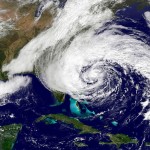
Hurricane Season
For more information » click here
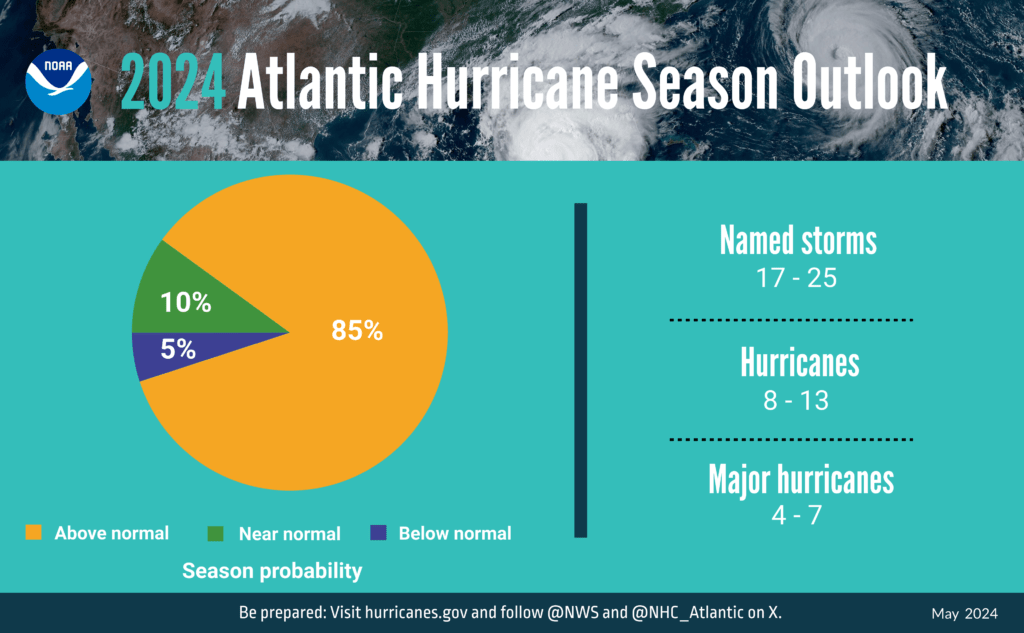 NOAA predicts above-normal 2024 Atlantic hurricane season
NOAA predicts above-normal 2024 Atlantic hurricane season
Read more » click here
Brunswick County reminds public to prepare for 2024 Atlantic hurricane season
Read more » click here
Highly active hurricane season likely to continue in the Atlantic
Near-record sea surface temperatures and the possibility of La Nina are key factors
Atmospheric and oceanic conditions have set the stage for an extremely active hurricane season that could rank among the busiest on record. With the peak of hurricane season quickly approaching, NOAA’s National Weather Service urges everyone to know their risk; prepare for threats like damaging winds, storm surge and inland flooding from heavy rainfall; and to have a plan if asked to evacuate. In their routine mid-season hurricane outlook update, forecasters from NOAA’s Climate Prediction Center updated the number of expected named storms to 17-24 (with winds of 39 mph or greater), of which 8-13 could become hurricanes (winds of 74 mph or greater), including 4-7 major hurricanes (winds of 111 mph or greater). This updated outlook is similar to the initial outlook issued in May; it includes totals for the entire six-month hurricane season, including the 4 named storms (2 tropical storms and 2 hurricanes) to date.
Hurricane season runs from June 1 through November 30.
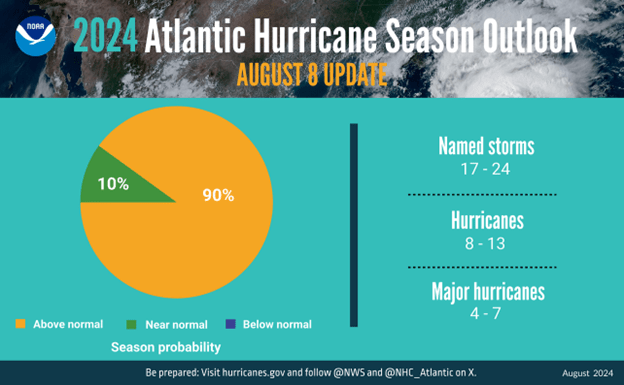
“The hurricane season got off to an early and violent start with Hurricane Beryl, the earliest category-5 Atlantic hurricane on record,” said NOAA Administrator Rick Spinrad, Ph.D. “NOAA’s update to the hurricane seasonal outlook is an important reminder that the peak of hurricane season is right around the corner, when historically the most significant impacts from hurricanes and tropical storms tend to occur.” In the Atlantic basin, a typical season will yield 14 named storms, of which seven become hurricanes and three become major hurricanes. Atmospheric and oceanic conditions continue to support an above-normal 2024 Atlantic hurricane season, with a 90% probability of this result. 2024 has only a 10% chance of a near-normal season and a negligible chance of a below-normal season.
The 2024 Atlantic hurricane season has already brought significant impacts:
- Tropical Storm Alberto formed on June 17, and over the following days it brought nearly a foot of rain to parts of Texas and New Mexico, triggering flash flood emergencies.
- On July 1, Hurricane Beryl became the earliest category-5 storm on record in the Atlantic basin. Beryl caused catastrophic damage and approximately 20 fatalities in several islands in the Caribbean Sea, with an additional preliminary death toll of about 25 people in Texas, Louisiana, and Vermont.
“Hurricane Beryl broke multiple long-standing records in the Atlantic basin, and we’re continuing to see the climatological hallmarks of an active season,” said Matthew Rosencrans, lead hurricane season forecaster with NOAA’s Climate Prediction Center. “Sea surface temperatures remain abnormally high, and La Nina is still expected to emerge during the hurricane season, so the time to prepare is now.”
Factors that could influence this year’s forecast
The Atlantic ocean basin is expected to be remarkably active due to several factors:
- Warmer-than-average sea surface temperatures in the tropical Atlantic Ocean and Caribbean Sea.
- Reduced vertical wind shear.
- Weaker tropical Atlantic trade winds.
- An enhanced west African monsoon.
These conditions are expected to continue into the fall. Of note, the dry Saharan air that prevented tropical storm development during portions of the middle of the summer is expected to subside in August.
Potential climate influences
An ongoing climate factor in the Atlantic basin is the continued warm phase of the Atlantic Multi-Decadal Oscillation, which reappeared in 1995 and has been favoring more active hurricane seasons ever since. Another factor this year is the possibility of La Nina developing in the coming months. Indicative of cooler-than-average sea surface temperatures in the equatorial regions of the eastern Pacific Ocean, La Nina can further weaken the wind shear over the Atlantic Basin, which enables storms to develop and intensify.
About NOAA’s Hurricane Season Outlook
NOAA’s Hurricane Season Outlook is for overall seasonal activity and is not a landfall forecast. Landfalls are largely determined by short-term weather patterns, which are only predictable within about a week of a storm potentially reaching a coastline. NOAA’s National Hurricane Center provides tropical weather outlooks out to five days in advance, provides track and intensity forecasts for individual storms and issues watches and warnings for specific tropical storms, hurricanes, and the associated storm surge.
Stay informed: Consult the National Hurricane Center website, hurricanes.gov, for the latest about tropical storm and hurricane activity in the Atlantic and Pacific Ocean basins. You can also follow updates from NHC on X at @NHC_Atlantic.
Read more » click here
5 reasons behind the historic absence of tropical storms this hurricane season
It has been the longest stormless streak in the Atlantic Basin in over 50 years, and AccuWeather meteorologists point to several factors that have put a temporary pause on the 2024 hurricane season.
The first week of September is usually one of the busiest times of the year for tropical storms and hurricanes, but there is an eerie silence across the Atlantic Ocean. AccuWeather adjusted its hurricane forecast amid the historic lull, with 2024 being the first time in 56 years a new named storm has not developed between Aug. 13 and Sept. 3. If nothing develops by Sept. 11, it would become the longest streak without a named storm around peak hurricane season since at least the start of the satellite era in 1960. There are several reasons behind the lull, some more meteorologically complex than others.
Delayed arrival of La Niña
A rapid collapse of El Niño was forecast to be swiftly replaced by La Niña, which, despite being linked to water temperatures near the equator of the Pacific Ocean, can have a major influence across the Atlantic Ocean. Typically, La Niña results in less disruptive winds, known as wind shear, making conditions prime for tropical development across the Atlantic. However, La Niña has yet to officially develop. “In March, it appeared that a transition to La Niña would occur sometime in the early to middle portions of the summer. Now it looks like La Niña may not start until the fall and might end up rather weak,” AccuWeather Lead Hurricane Expert Alex DaSilva said.
Abundance of dry, dusty air
Tropical storms and hurricanes need moisture-rich air to thrive, but such conditions have been scarce leading up to the peak of hurricane season. “There was an unusually high amount of dry air and Saharan dust across the Atlantic during the month of August,” DaSilva said. The dry, dusty air is predicted to decrease in the coming weeks, leading to conditions more favorable for tropical development.
‘Convoluted’ African wave train
During hurricane season, clusters of thunderstorms over Africa eventually emerge over the Atlantic Ocean. These become known as “tropical waves,” and when conditions are right, they can strengthen into tropical storms and hurricanes. But as of late, the train of tropical waves emerging off the coast of Africa has been “convoluted,” according to AccuWeather Senior Meteorologist Alex Sosnowski. Many thunderstorms in recent weeks have taken a rare path, drenching the Sahara Desert. When the perspective tropical waves do emerge over the Atlantic Ocean, they are encountering too much dry air and wind shear and struggle to develop, Sosnowski said.
Warm vs cool water
Water across nearly all of the Atlantic hurricane basin is incredibly warm, which can fuel any tropical system that does develop. However, one area just off the west coast of Africa is much cooler, a phenomenon known as “Atlantic Niña.” “Research has shown Atlantic Niñas can potentially lead to less tropical activity in the Atlantic,” DaSilva said. “The reasoning behind this cooling in the Atlantic is still a bit unclear.”
Stable upper atmosphere
Another piece to the meteorological puzzle explaining the recent lull in tropical activity is the unusually warm conditions high in the atmosphere. “Temperatures in the upper atmosphere in the tropics have been well above average this year and above 2023 levels,” DaSilva said. Warm air high above the ocean can cause the atmosphere to be more stable, which makes it more difficult for thunderstorms to develop and organize into a tropical depression or storm. “This could be tied to climate change and a warmer planet,” DaSilva added.
How does the rest of the 2024 Atlantic hurricane season look?
AccuWeather is predicting 16 to 20 named storms this season, lower than the initial forecast of 20 to 25 but still above the historical average of 14. “We don’t want anyone to let their guard down even though we are now forecasting fewer storms in total. We expect two to four more direct impacts to the United States this season. It only takes one powerful hurricane or slow-moving tropical storm to threaten lives and cause devastation,” AccuWeather Chief Meteorologist Jonathan Porter said. The peak of the Atlantic hurricane season is Sept. 10, and it officially ends on Nov. 30.
Read more » click here
What happened to predictions of a ‘historic’ hurricane season?
The Atlantic just made history for an unexpected distinction: The longest stretch without a single late-summer cyclone. Meteorologists are concerned delicate public trust is at risk.
As weeks went by with no hurricane activity, Phil Klotzbach could feel the pressure building. He and the rest of the meteorology world had predicted a potentially historic hurricane season, and yet, during what would normally be the most active stretch of tropical storms, the Atlantic Ocean was eerily quiet. Even his running buddies, with no knowledge of meteorology, began to ask: Where are all the hurricanes? As the author of one of the most trusted and longest-running hurricane season outlooks, he considered issuing an unprecedented midseason update in late August acknowledging the chances this year’s forecast could be a bust. He held off in case a new system formed over Labor Day weekend. That didn’t happen. Instead, the Atlantic made history for an unexpected and confounding distinction: The longest stretch in more than half a century without a single late-summer cyclone, a time of year when several often churn at once. Though two months of storm risks still lie ahead, the astonishing lull has meteorologists wrestling with confusion and criticism, while striving to protect delicate public trust. “Everyone was going big,” Klotzbach said, citing predictions of a flurry of more than two dozen storms. “It wasn’t like there were two or three models that said something else.” There are questions about whether planetary warming could be so extreme, it supercharged the storms that managed to form but has also allowed fewer to materialize. The quiet Atlantic stands in contrast to a dynamic Pacific typhoon season and yet another record-hot Northern Hemisphere summer that spread deadly temperatures, massive fires and overwhelming floods around the globe. Even as meteorologists can detect factors contributing to the lull, they are struggling to understand why those factors have overwhelmed conditions that might otherwise fuel intense storm after storm. Many who warned the public to prepare for a dangerous summer and fall are now caught in the awkward position of almost rooting for storms, lest they end up eating crow — and losing the public’s confidence — when their predictions fall flat come November. Initial forecasts of a historic season seemed spot-on when Beryl became the earliest Category 5 hurricane ever seen in July. The storm devastated Caribbean islands and Texas, but only reassured Klotzbach of Colorado State University’s hurricane season outlook, which he has led for nearly 20 years. His prediction included several storms of Beryl’s caliber. Others agreed. “It seemed like such an obvious, easy forecast,” Klotzbach said. Instead, nearly a month passed without any new storms forming in the tropical Atlantic. A weather system in the Gulf of Mexico ended the streak Monday when it became Tropical Storm Francine. It could strengthen and strike the Louisiana or northeast Texas coast as a hurricane on Wednesday. “It’s definitely taken me by surprise,” he said of the long lull. “I think any meteorologist being honest would say the same.”
Ripe for hurricanes
The ingredients to support an active hurricane season are abundant, just as forecasters had predicted. Ocean temperatures have been extraordinarily warm across the Atlantic (and much of the globe) for a year and a half, providing stores of fuel for storms that will last at least until the Northern Hemisphere’s winter. And a La Niña climate pattern — known for producing favorable wind patterns for Atlantic storms — has been building for months. Its arrival is probably imminent. That outlook was enough for confident predictions of one of the most active hurricane seasons in a long string of active seasons. “This season is looking to be an extraordinary one,” NOAA Administrator Rick Spinrad said in May. But for much of the past month, those conditions have not fueled storms. The trend could be a preview of future decades, in which the Intergovernmental Panel on Climate Change has predicted climate change could make hurricanes less frequent, while encouraging a higher proportion of them to become monster storms. So far this year, the tropical atmosphere has been much too stable for storms to develop because of unusual warming observed in the upper layers of the troposphere. Normally, a clash between surface warmth and cold air aloft helps fuel rising atmospheric motion that incites storm development. Meanwhile, many atmospheric seeds of what could become hurricanes have fizzled as they drifted from African monsoon clouds into the Atlantic much farther north than normal, just outside a band of tropical waters most hospitable to budding storms. The monsoon is strong, something that would normally mean more waves of atmospheric disturbance cast into the Atlantic. Rain has poured on parts of the Sahara that haven’t seen any in 40 years, while other parts of West Africa have seen double their normal rainfall, said Matthew Rosencrans, NOAA’s lead seasonal hurricane forecaster. But the monsoon is too far north to have an impact on the Atlantic, it seems — something meteorologists have never had to account for. “It’s kind of hard to predict something in the system that you’ve never seen before,” Rosencrans said.
Fears of a busted forecast
It’s a scenario all meteorologists are prepared for but hope to avoid: a busted forecast. And given how dire their warnings were months ago; it is testing them like no hurricane season in recent history. They are the first to admit seasonal forecasting barely resembles the sort of higher confidence weather predictions that guide decisions about whether to leave the house with an umbrella or put on a heavy jacket. Seasonal forecasts can evaluate whether storms are more likely to form. But, because they are made months in advance, they don’t have the ability to foretell where an African monsoon will land, for example. “These are factors that are not fully understood by anyone,” said Jon Porter, chief meteorologist for AccuWeather, which recently downgraded its own predictions for this year’s hurricane season. Climate change may be making it even harder to make long-term hurricane predictions, Rosencrans said. Forecasters have to account not just for how known conditions have contributed to storm activity in the past, but how changing Earth systems could affect storm activity in the future. When he was studying to become a meteorologist, he remembers learning that there are two kinds of forecasters: those who have already gotten it wrong and those who will. “It’s in those cases when it doesn’t go correct when you can learn the most,” Rosencrans said.
Facing public doubt
While they search for those lessons, forecasters are standing by their predictions. They cite statistics that show how much time and risk remains: “There’s still 60 percent of the hurricane season left to go,” Rosencrans said. “We could still end up with another 10 named storms this year, easily.” That’s because forecasters like Klotzbach hear plenty from the doubters. “Why would you trust forecasts, literally ever?” one X user responded to Klotzbach in mockery on Wednesday. “Safe to assume federal monies encourage aggressive forecasts for severe weather,” another suggested. If more hurricanes don’t materialize soon, the confusion could have lasting impact. Research has shown the “cry wolf” effect — when warnings of extreme weather don’t come true — can cause people to disregard future forecasts. Careful communication of forecast uncertainties can counteract that, said Tobias Vorlaufer, a researcher at the Leibniz Centre for Agricultural Landscape Research in Germany. But what if forecasters don’t know how to issue such caveats? “Our brain is just wired in a way to really remember when forecasts were wrong,” Vorlaufer said. “We kind of forget the seasons where the forecast was more accurate.” For Klotzbach, who ended up writing a 30-page account of why this hurricane season has confounded expectations, transparency is the best strategy, he said. He knows the dire forecasts mean more people are paying attention to what is happening in the tropical Atlantic. And he knows that means public trust in his work is at risk. “That’s not something you want to lose,” he said.
Read more » click here
This hurricane season is confounding experts and defying forecasts.
What the heck is going on?
It’s early September – what should be the busiest stretch of hurricane season. Forecasters predicted this one was going to be bad: storm after storm, the most bullish forecasts on record. Instead, the Atlantic Ocean is enveloped in a rare and strange calm that has flummoxed forecasters and reset their expectations. And the whole thing could be a glimpse at what’s to come as the planet gets hotter. Despite ideal conditions that fueled pre-season predictions of upwards of 20 named storms, the immediate prospects for one are low, and none have formed in the Atlantic since Ernesto in mid-August – a streak unmatched in 56 years. “If you had told me a month ago that nothing would (develop) after Ernesto I wouldn’t have believed you,” said Phil Klotzbach, a hurricane expert and research scientist at Colorado State University. “It’s really surprising.” The strange season has been influenced by extreme atmospheric conditions that are a byproduct of climate change driven by fossil fuel pollution, experts said. And it could also be a “lens” into the more volatile storm behavior of the future, said Matthew Rosencrans, lead hurricane season forecaster with NOAA’s Climate Prediction Center. Scientists have long said a warming world will ultimately result in fewer but stronger storms something this season has born the fruit of. Hurricane forecasters, including Klotzbach, were predicting the calendar flip from August to September would revive the season. Many widely used forecast models signaled the same thing. It didn’t pan out. The conditions ideal for hurricane development – warm ocean water, minimal storm-disrupting upper-level winds, and plenty of moist air – are there, but the storms aren’t happening. Lesser-understood atmospheric factors have gotten in the way, Klotzbach said, and they have ties to global warming. Take that extremely warm ocean water: The Atlantic has been near-record warm since before the season began. It fueled record-breaking Category 5 Hurricane Beryl, a hurricane with such immense strength so early in the season that it was considered a potential harbinger of a busy season to come. But warm water can’t intensify storms if they never make it there in the first place. Almost all hurricanes originate from stormy weather coming off the coast of Central Africa. Since about mid-summer, these hurricane seeds have been pushed farther north than usual – even into one of the driest areas on Earth – the Sahara Desert. They have also exited Africa much farther north than normal and have been stunted as a result. Dry, dusty air and cooler ocean temperatures here, off the continent’s northwest coast, have combined to choke off storms. The northward shift could be tied to the interaction between extremely warm water in the tropical Atlantic and a small patch of abnormally cool water – a burgeoning Atlantic Niña – near the equator, according to Klotzbach and his group at CSU. The African monsoon is supercharged with a ton of moisture, something that can actually delay tropical storm development, a study published in June in the Journal of Advances in Modeling Earth Systems found. It turns out there’s a Goldilocks zone for hurricanes – dry conditions will starve thunderstorms of the fuel they need, but too much can make them so messy that they can’t organize into a cyclone. The moisture needs to be just right. “For the first time, we’re seeing that this is actually the case,” said the study’s lead author, Kelly Núñez Ocasio, who is also an assistant professor at Texas A&M University. “We’re seeing it right now in the Atlantic hurricane season.” This scenario could happen more frequently as the world continues to warm because the atmosphere will hold onto more moisture. Further research is needed to definitively determine the change over time, Núñez Ocasio cautioned. Very warm conditions tied to the climate crisis both at Earth’s surface and higher up in the atmosphere are also limiting the available chaotic energy tropical systems need to form. Along with warming at the surface, even the highest levels of the troposphere – the layer of Earth where all life and most weather happens – are warming over time, a 2023 study published in the journal Nature found. This trend could potentially keep storminess in the Atlantic much more subdued during the hottest part of the year, similar to what unfolded this year. The weather weirdness means there are no immediate legitimate storm prospects. If no storms develop by the typical peak of hurricane season on September 10, it would mark a peak-of-season quiet streak unmatched in nearly 100 years, according to hurricane expert Michael Lowry. Still, experts warn the season isn’t finished and could show signs of life soon. More than 40% of all tropical activity in a typical season occurs after September 10, so there’s plenty of precedent for storms to reinvigorate the Atlantic in the following months. Klotzbach believes the season could reawaken by the second half of September, when these limiting factors could start to lessen. And as the season drags on, the area where storms start to form later in hurricane season creeps closer to the Caribbean and the US coastline, including in the Gulf of Mexico which is record-warm. Plus, La Niña is expected to build throughout the fall and could give a boost to activity in October and November. Anyone in areas at risk for tropical impacts shouldn’t let their guard down because of the recent lull in activity. Storms “will come back,” Klotzbach cautioned. “I still don’t see this season ending well.”
Read more » click here
A Once-Dormant Hurricane Season Is Spinning Into Action
Technically, the hurricane season has fallen short of the “hyperactive” forecast, but in some ways it hasn’t.
There are just under two months left before the official Atlantic hurricane season ends in November, and with millions of people across the Southeast United States still assessing the damage of Hurricane Helene and two more storms churning at sea, experts are warning it isn’t over yet. It may even last into December. What was expected to be a “hyperactive” hurricane season has turned out to be only average by the start of October. It may not have felt average to anyone who lives in the Southeast, where, in addition to Helene, three other hurricanes have already made landfall this year. But in a typical hurricane season in the United States, two or three hurricanes make landfall; in the busiest year on record, 2020, there were six. “So, in some ways, it’s been busy, and in some ways, it hasn’t been busy,” said Matthew Rosencrans, the lead forecaster for the National Oceanic and Atmospheric Administration’s seasonal hurricane outlook. His organization was one of many this spring that predicted an abnormally busy season. In May, NOAA said it expected 17 to 25 named tropical cyclones, eight to 13 of which would become hurricanes. An updated assessment in August, issued during a long lull in storms, held generally the same forecast. As of Friday, there have been 12 named storms this year, and eight have become hurricanes. October and November typically calm down slightly. When graphed, an average season looks like a tall mountain with a solid peak of activity at the beginning of September. But seasonal hurricane experts like Phil Klotzbach at Colorado State University believe this year will instead bring three hurricane seasons: “A busy start, a super-quiet peak and a busy finish,” he said. When graphed, this season will look like two mountain peaks with a distinct valley in the center. In early July, Hurricane Beryl, the earliest major hurricane to form in a season, was the first hurricane to land in the United States, lashing Houston with damaging winds and bringing warnings of what was to come this season. Then came Debby, which flooded Florida, Georgia and the Carolina coasts in early August. Then, after Hurricane Ernesto, the Atlantic went quiet. There was nothing for weeks at what was supposed to be the height of the season. Forecasters who had warned of the worst began questioning their expectations and looking for explanations for the lull. Scientists are already trying to diagnose what happened, in hopes of informing future forecasts and better preparing coastal residents. One possible explanation is that the African Monsoon, a weather pattern that can spin up storms off Africa’s west coast, was too far north. Instead of moving over warm tropical water, this year’s storms hit cooler conditions that were less conducive to helping them form. Another hypothesis is that the air was too warm at higher levels, which meant that the already warmer air at the surface of the ocean couldn’t rise up to form thunderstorms. Then, almost overnight, just after the midpoint of hurricane season in mid-September, the lull broke. Francine formed and hit Louisiana, and not far behind it were more: Gordon, Kirk, and Leslie, which churned generally harmlessly in the middle of the Atlantic. The worst was Helene last week, which rapidly intensified in the Gulf of Mexico, striking the Florida shores as the strongest hurricane to ever hit the state’s Big Bend coastline. Its tropical downpours dropped over two feet of rain on parts of the Appalachian Mountains, causing widespread destruction. Despite the quick succession of recent storms, “we’re probably a little behind where I would have expected to be at the beginning of the season, given the outlook we had,” Mr. Rosencrans said. When Leslie formed this week, the season officially became average, at least as far as the number of overall storms. But of the named storms, 66 percent have become hurricanes. So, the average season may yet have an above-average number of hurricanes. Even though the total storm count is likely to be lower than forecasters predicted in the spring, details this year have surprised them. Historically, in October, a storm is much more likely to form in the Caribbean Sea or the Gulf of Mexico than in the eastern Atlantic. But Hurricane Kirk and Leslie, became a hurricane late Friday night, have done just that, forming off the coast of Africa and moving through Atlantic waters this week. Dr. Klotzbach called that “impressive.” “The conditions that would make this an above-normal season, the warm sea surface temperatures, the coming of La Niña, are still in place,” Mr. Rosencrans said. An average year could produce three named storms in October and one in November. So, another five or six storms are not out of the question, he added, and this would be close to the lower end of NOAA’s forecast of 17. The hurricane season officially ends on Nov. 30. Still, Mr. Rosencrans cautions that during the La Niña years, with warm sea surface temperatures in the Atlantic, the active season can last into December. That happened in 2005 when Hurricane Epsilon formed in late November and stretched into the first week of December and then Tropical Storm Zeta formed at the end of the year, lasting into the first week of 2006.
Read more » click here
Hurricane season isn’t over yet.
Here’s why North Carolina residents need to stay vigilant.
Despite tropical storm-induced flooding in the mountains and along the coast, experts say NC isn’t out of the woods yet as hurricane season drags on
First Tropical Storm Debby, a slow-moving storm that trudged up the East Coast in early August before making a second landfall along the central South Carolina coast, drenched the Cape Fear region with more than 15 inches of rain in places. A little more than a month later, an unnamed storm that wasn’t deemed a big enough threat to close many schools swamped parts of southern New Hanover County and much of Brunswick County with another massive deluge. The nearly 20 inches of rain in some areas caused extensive flash flooding, collapsed roads, and destroyed several bridges. Then Tropical Storm Helene blew into the state three weeks ago, pummeling Asheville and the North Carolina mountains. The record-setting rainfall, more than 18 inches in some places, washed out roads and bridges, knocked out power to nearly 2 million people in the Carolinas − with 14,000 N.C. customers still without power as of Wednesday, and killed at least 95 people in the state with dozens still unaccounted for. North Carolina has been hammered on both ends of the state by tropical weather systems this year, making 2024 one of the worst hurricane seasons the state has seen in a long time. And while it might be mid-October and temperatures are already beginning to fall, experts warn that the Tar Heel State needs to stay on alert for another possible visit from Mother Nature. Several factors are contributing to officials’ concerns, but chief among them is the impact climate change is having on temperatures and weather patterns. “So, no, we are definitely not out of the woods for this season,” said Dr. Michael Mann, a meteorologist and scientist at the University of Pennsylvania, in an email.
Does North Carolina get late-season hurricanes?
On Oct. 15, 1954, Hurricane Hazel made landfall near the North Carolina/South Carolina state line. The storm remains the only Category 4 hurricane to ever hit the Carolinas. After wiping clean some of the Brunswick County barrier islands with storm surge that exceeded 18 feet in places, the monster storm barreled inland at speeds of more than 50 mph. That allowed Hazel to bring hurricane-force winds well inland, to places like Fayetteville, Raleigh and Goldsboro. While Hazel might be a bit of an outlier, it isn’t the only storm that has impacted North Carolina late in hurricane season. Others include 2012’s Hurricane Sandy, which brought substantial overwash to the Outer Banks and nearly a foot of snow to the N.C. mountains in late October, and 2018’s Tropical Storm Michael that left more than 400,000 without power and flooded many coastal communities. Hurricane Matthew also hit the state in October 2016, flooding nearly 100,000 structures across much of Eastern North Carolina and causing billions in damages. Remnants of tropical systems that form and then fall apart farther south also can wander north and impact parts of the state, especially coastal areas as they ride the Gulf Stream north.
How is the rest of the 2024 hurricane season shaping up?
As of Wednesday, the National Hurricane Center was tracking two tropical disturbances in the Atlantic basin, with the one in the mid-South Atlantic on track to hit the northern Caribbean and then potentially Florida. If it strengthens enough, it would become Tropical Storm Nadine. They are unlikely to be the last systems of the season to attract the attention of meteorologists. Before hurricane season officially began June 1, officials were expressing concern over how bad it might be. With climate change warming the oceans and air temperatures seemingly hitting new highs every month, they said it really was only a question of just how brutal the season would be. But for most of the summer, aside from Beryl, which was a rare major June hurricane, the reality on the ground seemed to confound the predictions, with Saharan dust blowing off Africa helping limit storm formation for much of June, July and into August. Then Debby, Ernesto, Francine and Helene came barreling ashore − not to mention the no-name storm that pummeled Southeastern North Carolina. Mann said conditions remain ripe for more storm activity. He said sea surface temperatures remain very warm, largely a result of heat-trapping gasses pumped into the atmosphere tied to human activity. Warmer ocean water helps fuel storms, allowing them to intensify more quickly and grow bigger and stronger. They also can hold their strength longer and travel farther inland, and hotter ocean temperatures allow them to travel farther north, striking areas that aren’t used to seeing raging hurricanes on the horizon. Mann said we’re also still transitioning toward a La Niña climate pattern. That will mean decreased wind shear in the tropical Atlantic and a more favorable environment for tropical cyclones. “That combination of factors tends to lead to very late seasons,“ Mann said. “2005 is the definitive example, where we saw named storms into the new year.” The record-setting 2005 hurricane season included 28 named storms and 15 hurricanes. Four of those reached Category 5 strength, and seven of the storms formed in October, another three in November. Although hurricane season is supposed to end Nov. 30, the 2005 season continued until Jan. 6 and was so busy the National Hurricane Center had to use the Greek alphabet to name some of the storms. Infamous storms from that season included Hurricanes’ Katrina, Rita and Wilma. Another storm, Hurricane Ophelia, raked much of the N.C. coast, causing significant coastal flooding and erosion.
Read more » click here
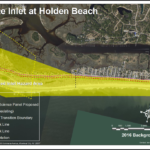
Inlet Hazard Areas
For more information » click here
.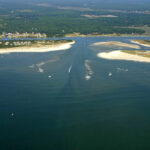
Lockwood Folly Inlet
For more information » click here.

Seismic Testing / Offshore Drilling
For more information » click here.

Offshore Wind Farms
For more information » click here
Why development of Brunswick County’s offshore wind farms has largely moved onshore
Duke Energy has included offshore wind in its latest plan to reduce carbon emissions. Now state regulators are reviewing the proposal
The wind hasn’t stopped blowing, and the waters just off the Brunswick County coast are as prime a spot for an offshore wind farm as they always have been. But after a flurry of announcements and activity in previous years, including offshore survey work last summer, things have been largely quiet on the ground and in the waters roughly 22 miles south of Bald Head Island. That’s not the case in Raleigh, though − and that’s largely where the future of the Brunswick wind farms will be decided. “Industry is waiting to hear if the N.C. Utilities Commission is going to green light offshore wind as part of the state’s electricity mix in the coming years,” said Katharine Kollins, president of the Southeastern Wind Coalition, a nonprofit that advocates for wind energy development in the Southeastern U.S. “It’s hard for them to consider spending huge sums of money on these projects if they don’t have some guarantees and cost certainty.”
Pros and cons
Offshore wind is seen by clean energy advocates as a key component in helping governments de-carbonize their energy grids by reducing their reliance on dirty, greenhouse gas-spewing power sources like coal and natural gas. That includes North Carolina, which has a stated goal of reducing its 2005 level of carbon emissions by 70% by 2030 − although Duke Energy would like to see that goal pushed back to 2035 − and becoming carbon-neutral by 2050. In 2022, TotalEnergies Renewables USA and a Duke Energy subsidiary paid the federal government a combined $315 million to lease nearly 140 miles of ocean off Brunswick County for a pair of huge wind farms. If fully developed, which would occur sometime in the early 2030s, the wind farms could produce enough power to supply 750,000 homes. The pair of wind farms proposed for Long Bay will join another offshore wind farm planned for waters roughly 27 miles off Kitty Hawk on the Outer Banks. That project is farther along than the Southeastern N.C. wind projects. While embraced by clean energy advocates, offshore wind farms have their critics. The projects are very capital intensive to build, although those costs drop dramatically once the turbines are up and running. Some coastal residents are also concerned that the giant windmills will damage their ocean “viewscapes,” although officials have said the Brunswick turbines will be next to invisible from the county’s south-facing beaches. Concerns also have been raised about the offshore turbines impacts on marine life, specifically marine mammals like the highly endangered North Atlantic right whale.
Offshore wind moves center stage
As the state’s largest utility, Duke is largely driving the train on what sort of mix of power production sources will be needed to meet the state’s carbon-reduction goals in the electricity sector while also keeping the lights on at an affordable price for consumers. In 2021, Cooper signed an executive order that doubled down on the state’s commitment to offshore wind power, with goals of 2.8 gigawatts (GW) off the North Carolina coast by 2030 and 8 GW by 2040 − enough to power roughly 2.3 million homes. But Duke’s initial Carolinas Resource Plan, basically a road map on how the utility proposed to reduce its future carbon emissions in both Carolinas, only had offshore wind as an option to meet future power needs. That changed in January, however, when the utility, citing a projected surge in future electricity demand, proposed moving forward with plans to add 2.4 GW of offshore wind to its grid in the 2030s as part of its updated carbon plan. That plan, which environmentalists and clean energy advocates are contesting as still being too reliant on old energy sources like natural gas plants instead of focusing on renewables like wind and solar, is now being reviewed by the utilities commission. Duke spokesperson Bill Norton said the utility has asked regulators to allow it to gather additional information to make sure integrating power produced by offshore wind farms into the company’s power grid is financially viable. That work would include pricing information, an issue that derailed several other proposed offshore wind projects after companies decided they couldn’t build and operate the wind farms at the contracted price utilities had agreed to buy the power at. “TotalEnergies looks forward to the (utilities commission) order in December 2024 and additional approvals from N.C. and S.C. as necessary, which will inform the next steps for development activities in 2025,” said company spokesperson Elizabeth Bennett in an email.
‘Moving in a positive direction’
Offshore wind projects, while certainly green, have run into some rough financial waters in recent years. That stormy weather included efforts by companies to renegotiate their contracts with utilities due to rising construction costs, higher inflation and supply chain disruptions, surging interest rates, and the war in Ukraine. Those headwinds culminated in some wind developers in New York and New England deciding to walk away from projects rather than get stuck in money-losing endeavors. But Kollins said the offshore wind sector is rebounding, with several large farms in the Northeast now sending power onshore and some of the financial and supply chain issues that plagued earlier projects getting ironed out as the industry matures in the U.S. “There are a lot of good things happening for offshore wind now,” she said. “Certainly, challenges for the industry remain, but I think it’s definitely moving in a positive direction.”
Read more » click here
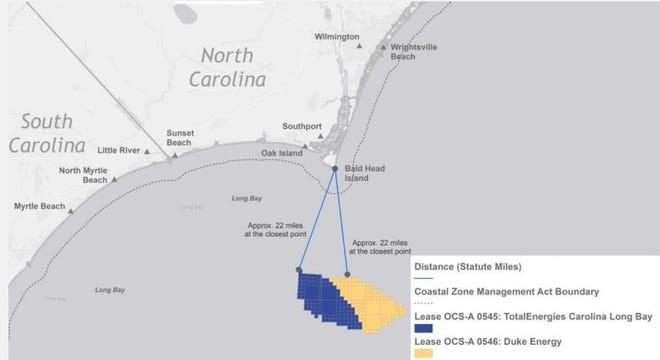 11 things to know about offshore wind farms in North Carolina and the United States
11 things to know about offshore wind farms in North Carolina and the United States
There are currently three offshore wind farms proposed for the N.C. coast, including two off Brunswick County.
After a few industry hiccups, the proverbial winds seems to be blowing back in the right direction for offshore wind projects that the Biden administration and many states, including North Carolina, are relying on to help them tackle carbon emissions from their power sectors.
Among the offshore wind projects on the drawing board are three wind farms off the coast of North Carolina, including a pair roughly 20 miles south of Bald Head Island in Brunswick County.
Here are 11 facts and tidbits to know about the Brunswick projects and offshore wind farms in general.
- In 2022, TotalEnergies Renewables USA and a Duke Energy subsidiary paid the federal government a combined $315 million to lease nearly 140 miles of ocean off Brunswick County for a pair of huge wind farms. The projects are currently in the very early stages of planning and survey work.
- If the Brunswick wind farms are fully developed, which would occur sometime in the early 2030s, the projects could produce nearly 2.4 GW of power, enough to supply 750,000 homes.
- In 2021, Gov. Roy Cooper signed an executive order that doubled down on the state’s commitment to offshore wind power, with goals of 2.8 GW off the N.C. coast by 2030 and 8 GW by 2040 − enough to power roughly 2.3 million homes.
- The latest version of Duke Energy’s Carolinas Resource Plans, which includes carbon-reduction proposals for both North and South Carolina, includes plans to add 2.4 GW of offshore wind to its grid by 2035. The N.C. Utilities Commission is currently reviewing Duke’s proposed plan, with a decision expected by the end of the year.
- According to the National Renewable Energy Lab (NREL), Virginia, North Carolina, South Carolina, and Georgia have 82% of the East Coast offshore wind resource in shallow water and 45% of the total East Coast offshore wind resource.
- Currently the largest offshore wind farm under construction in the U.S. is being built by Dominion Energy 27 miles off the coast of Virginia. The project, which should be finished in about two years, is expected to generate 2.6 GW from 176 turbines.
- Offshore wind turbines are getting taller and taller. According to the U.S. Department of Energy, the average height of the hub − where the large, spinning blades are attached to the monopole − was about 330 feet in 2016. That is expected to increase to 500 feet, the height of the Washington Monument, by 2035. Add the height of the blades at their apex, and that increases to more than 800 feet.
- North Carolina is eager to capitalize on the economic opportunities offered by the growing offshore wind market. Efforts include the formation of the N.C. Taskforce for Offshore Wind Economic Resource Strategies (NC TOWERS).
- A 12-turbine wind farm off the Hamptons on New York’s Long Island became the first U.S. offshore wind project to provide power onshore when it was connected to the grid in December 2023.
- Despite significant federal incentives and strong political support, offshore wind has had a rough few years. Issues that have arisen include post-pandemic inflation spikes, rising interest rates, supply chain bottlenecks, and worries from coastal residents that huge turbines would ruin their “viewscapes.” Some Republicans and environmentalists also have raised concerns about the wind farms’ impacts on marine life, particularly whales.
- Compared to other countries around the world, the U.S. is a laggard in harnessing the energy potential of offshore winds. The top five countries, in descending order, generating electricity from offshore wind farms are China, the United Kingdom, Germany, the Netherlands, and Denmark.
Read more » click here
Things I Think I Think –
 Eating out is one of the great little joys of life.
Eating out is one of the great little joys of life.
Restaurant Review:
The Dinner Club visits a new restaurant once a month. Ratings reflect the reviewer’s reaction to food, ambience and service, with price taken into consideration.
/////
Name: Circa 1922 / Circa Group
Cuisine: New American
Location: 8 Front Street, Wilmington NC
Contact: 910.762.1922 / https://circa1922.com/
Food: Average / Very Good / Excellent / Exceptional
Service: Efficient / Proficient / Professional / Expert
Ambience: Drab / Plain / Distinct / Elegant
Cost: $33 Inexpensive <=20 / Moderate <=26 / Expensive <=35 / Exorbitant <=60
Rating: Three Stars
Circa 1922 is a popular destination, it is home to tapas-style dining and wine bar in historic downtown Wilmington. It is not just a tapas restaurant; they are only a small portion of the eclectic menu. The crown jewel in owner Ash Aziz six restaurants in The Circa Group, this one is primarily a vintage 1920’s era speakeasy. Certainly, it is among the best restaurants downtown, an extraordinarily good restaurant that does not disappoint.
Downtown Wilmington restaurant balances classic charm with fresh elements
Time plays tricks on you at Circa 1922 in downtown Wilmington. As the name implies, the restaurant is in a historic building (originally a bank) built over 100 years ago at 8 N. Front St. But owner Ash Aziz said people are still surprised that the eatery has been in business for 24 years. “It has that old, established charm,” he said. “But it’s also a fun, inviting place to be.” The key is in creating a balance – maintaining what people love about the restaurant and keeping things fresh and updated. As for those things that keep bringing people back, two of them are the popular happy hour bar menu and the prix- fixe dinner menu. They became a part of Circa 1922 soon after it opened in 2000. The bar appetizers are available 5-7 p.m. and the prix-fixe menu includes options for a three-course meal for $40. “But we are also really pleased to also attract new diners, those who are finding us for the first time,” Aziz said. Circa 1922 has evolved from a small-plates concept to one that is now more of a modern American farm-to-table menu, with an emphasis on fresh seasonal produce, local seafood, and house-made pasta. But smaller bites are still available on the dinner menu and at the bar. They include three new-ish Unami Bombs or flavorful Asian-inspired toppings on crispy rice cakes. There’s always a mix of new craft cocktails and an adeptly curated wine selection. Part of the ongoing success is because of Chef Will Copeland, Aziz said. “He’s done a really great job there,” he said. “People will want to look forward to our fall and winter menu. We’re planning some things that will really be unique and elevated.” As Aziz looks ahead to the restaurant’s 25th anniversary in February, he said he’s planning some subtle updates to the space. Aziz is well-known for creating unique and inviting spaces, like the open-and-sunny Perla Raw Bar and Origins, which evokes classic mid-century modern and art deco. “We just want to improve the design a little,” he said. “It will still feel like Circa, but we’ll just jazz it up a bit.” “And we are planning to celebrate,” he said. “We will have more information soon.”
Read more » click here
Dining Guide – Local
Old places, New faces
Name: SmacNally’s
Location: 1045 B-Var Road, Supply NC
This spot that was once known as Betty’s Waterfront Restaurant before reopening in 2020 as LouLou’s Waterfront Restaurant. LouLou’s has permanently closed. They weren’t closed long before a new eatery was announced for the space. Owners of SmacNally’s Waterfront Bar & Grill are planning a second location for 1045 B-Var Road S.W. in Supply.
Popular Outer Banks seafood restaurant planning a second location in Brunswick County
For 25 years, SmacNally’s Waterfront Bar & Grill has been serving fresh seafood and burgers in Ocracoke. Now, the owners are planning to expand the brand for the first time, and they’ll be doing so in Brunswick County. Scott McNally announced that they’ll be taking over the recently closed LouLou’s Waterfront Restaurant on the Intracoastal Waterway at 1045 B-Var Road S.W. in Supply. “It’s time,” McNally said. “We’ve put a lot into this brand and it’s time to grow.” McNally has decades of experience in restaurants, and together with partners Tom Burruss, Matt Bacheler and Persell Morgan, they have more than 120 years in hospitality. One caveat is they wanted to continue with the waterfront restaurant tradition that’s close to local seafood. It made the Holden Beach area ideal. “At SmacNally’s we work with fishermen, and we have a fish cleaning counter right at the end of our dock. They bring it right from there, to our restaurant. It’s usually just hours from the ocean.” That dock-to-kitchen model is one they’d like to continue in Holden Beach. If that’s not possible, they still plan to work with local markets for the freshest seafood, he said. LouLous restaurant opened in fall 2020 in what was formerly Betty’s Waterfront Restaurant. The space has indoor and outdoor dining, a bar area and slips for boat parking. McNally said they hope to open the SmacNally’s in May. “Or sooner, if possible,” he said.
Read more » click here

.
..
Finally, they are now
open for business!
Dining Guide – Local * Lou’s Views (lousviews.com)
Dining Guide – North * Lou’s Views (lousviews.com)
Dining Guide – South * Lou’s Views (lousviews.com)
Restaurant Reviews – North * Lou’s Views (lousviews.com)
Restaurant Reviews – South * Lou’s Views (lousviews.com)
Book Review:
Read several books from The New York Times best sellers fiction list monthly
Selection represents this month’s pick of the litter

VERA WONG’S UNSOLICITED ADVICE FOR MURDERERS by Jesse Sutanto
Vera a lonely widow finds a dead body in her tea shop in San Francisco’s Chinatown. Convinced the death was no accident, despite what the authorities insist, she takes it upon herself to solve the murder. One of them will not survive the night. It’s a modern psychological thriller, basically a takeoff of the locked-room mystery.
That’s it for this newsletter
See you next month
Lou’s Views . HBPOIN
. • Gather and disseminate information
. • Identify the issues and determine how they affect you
. • Act as a watchdog
. • Grass roots monthly newsletter since 2008

